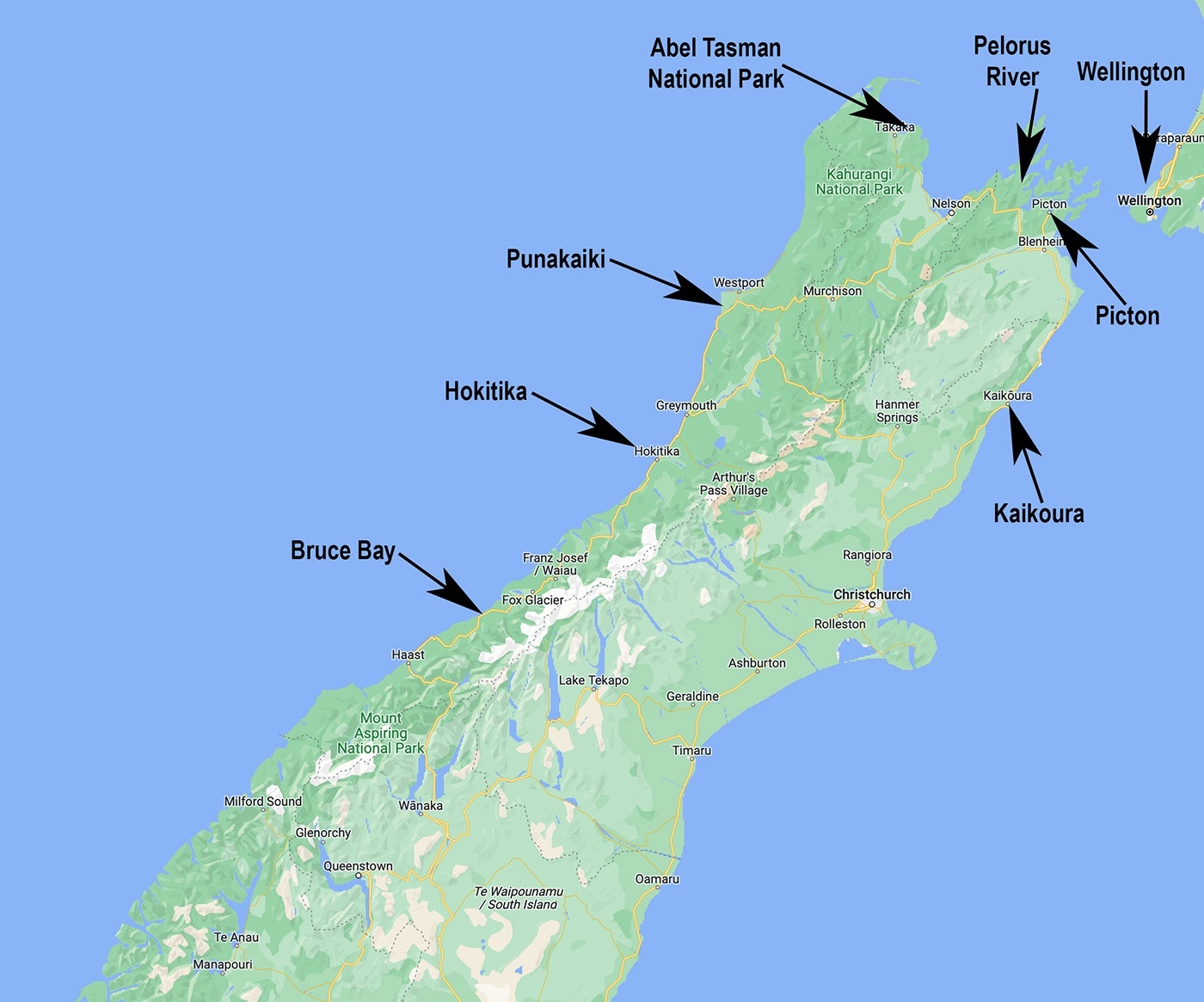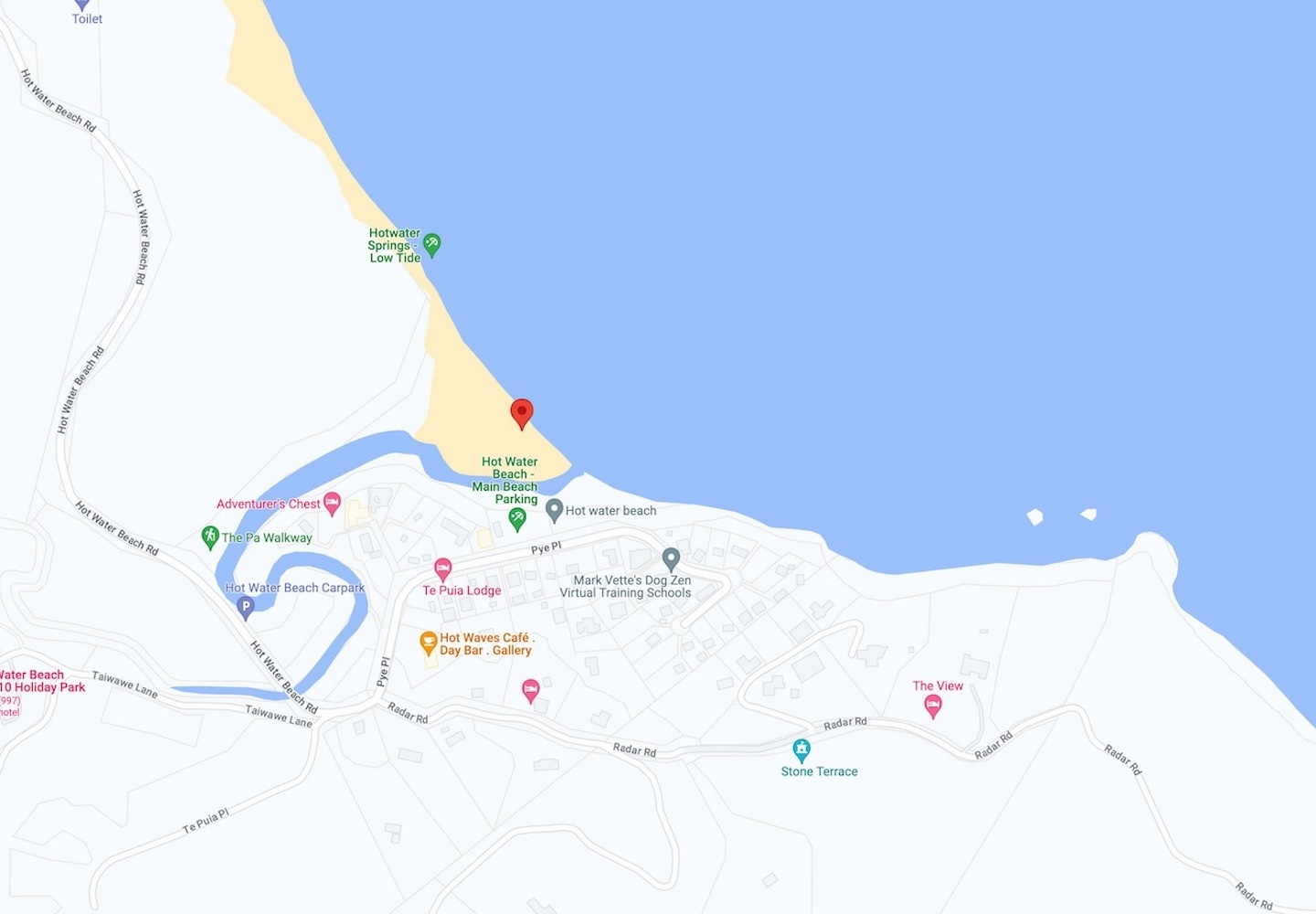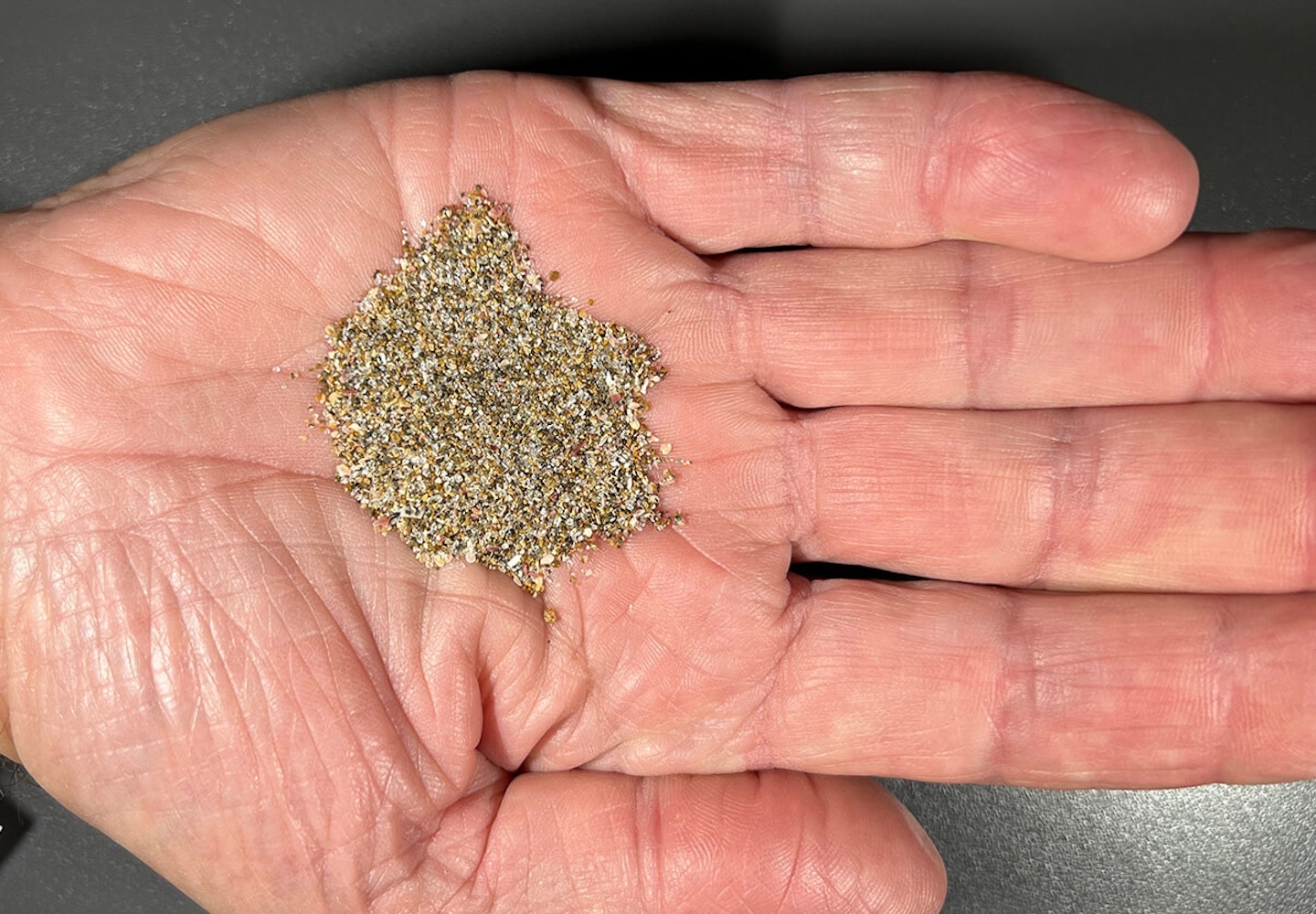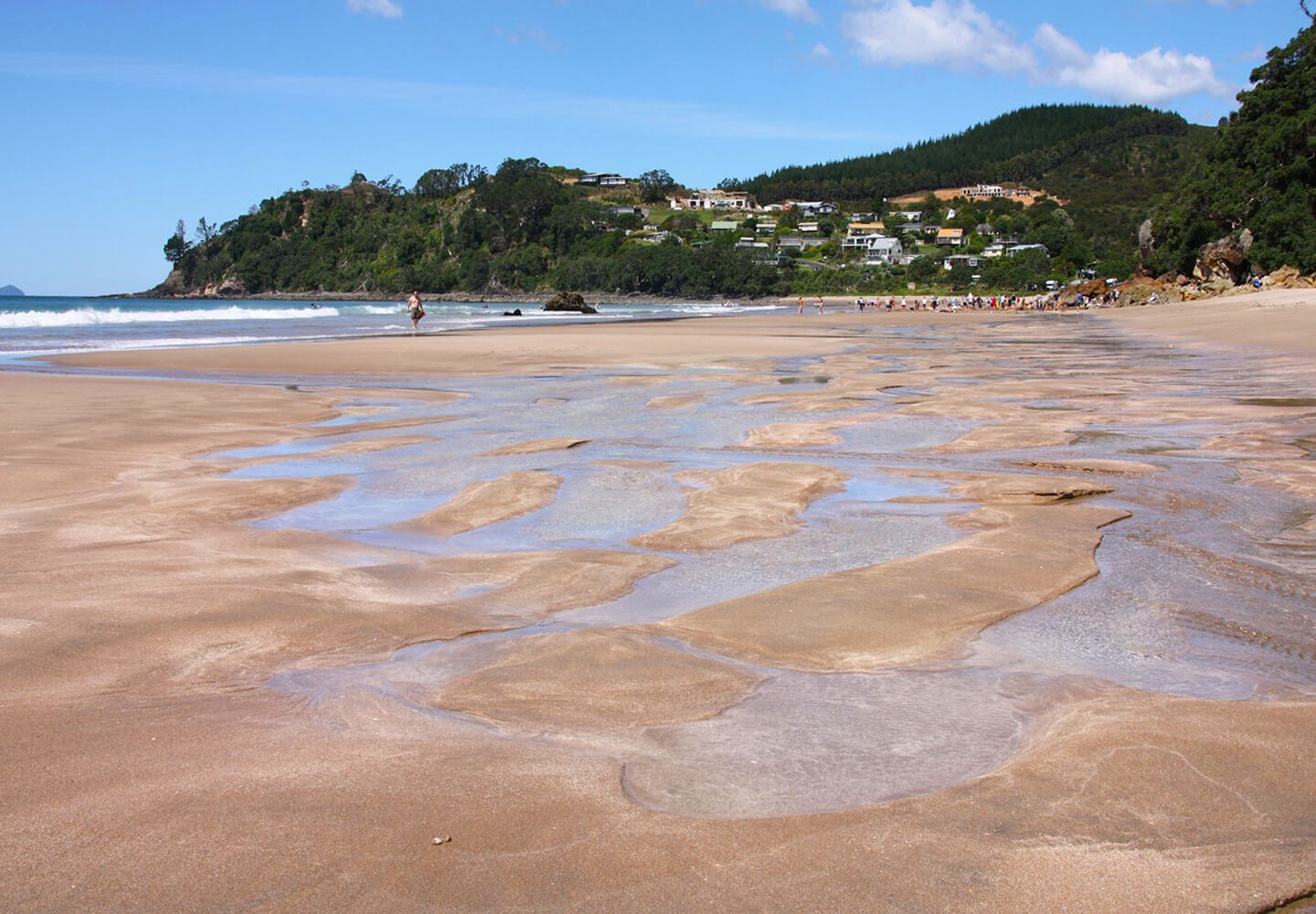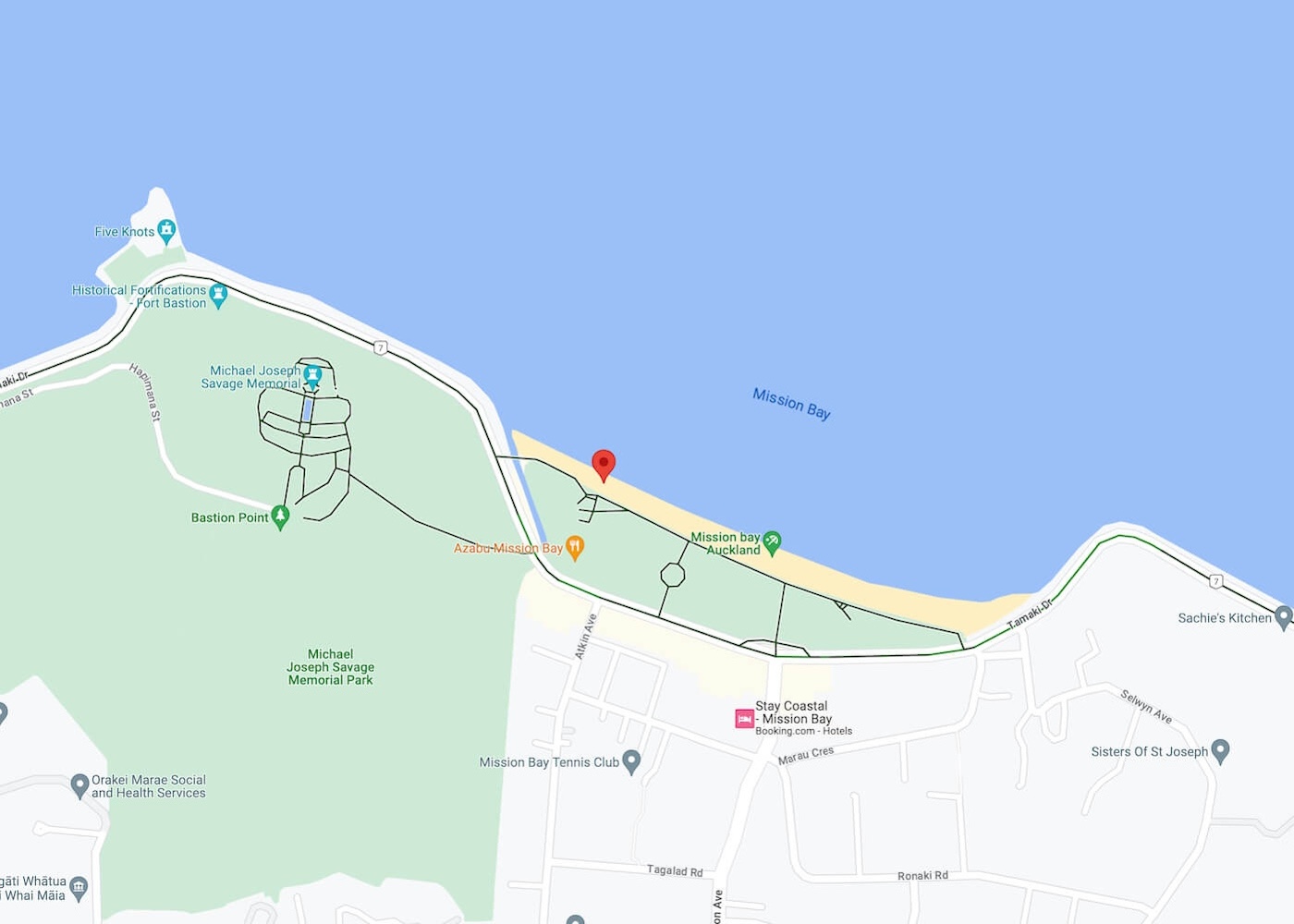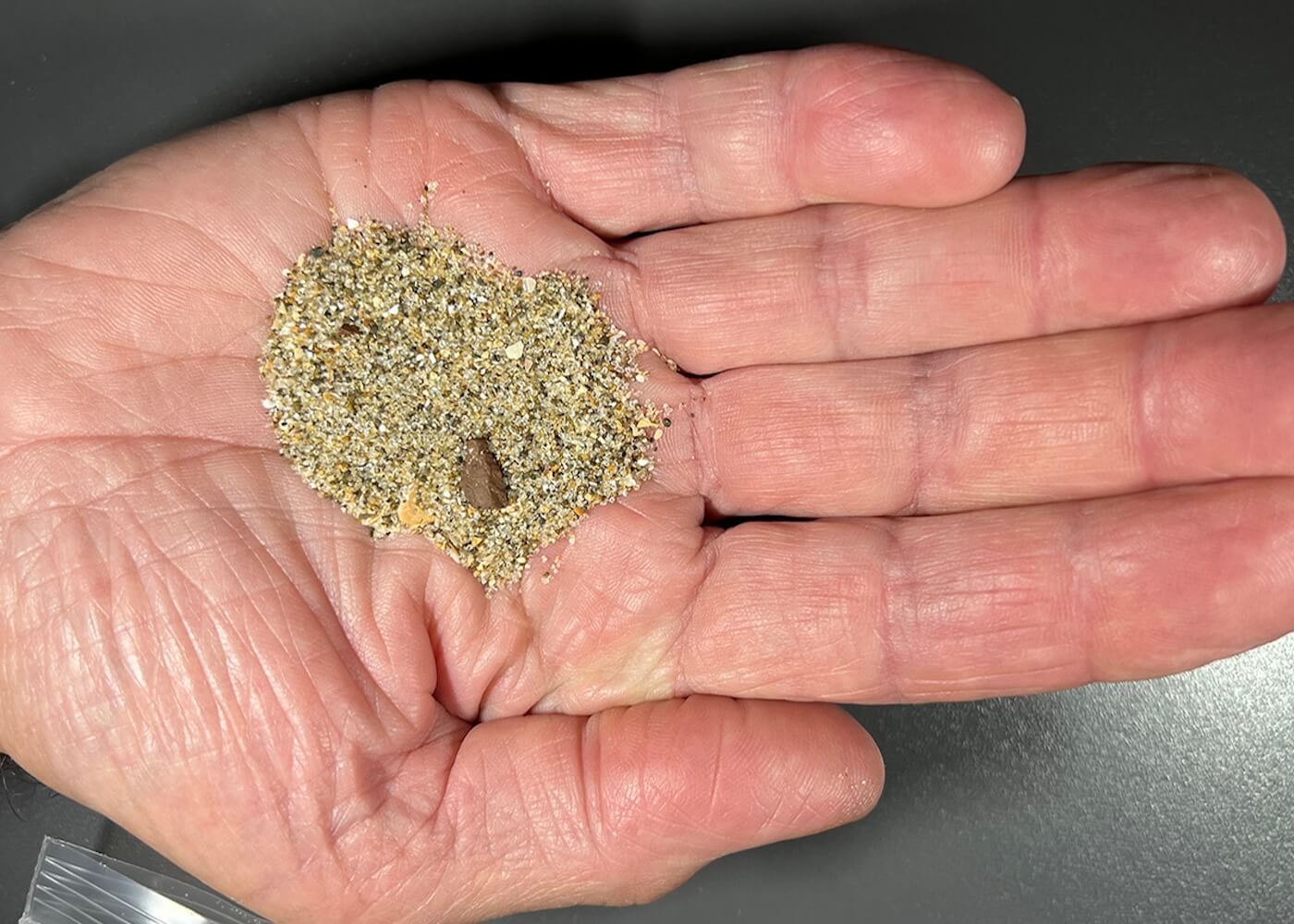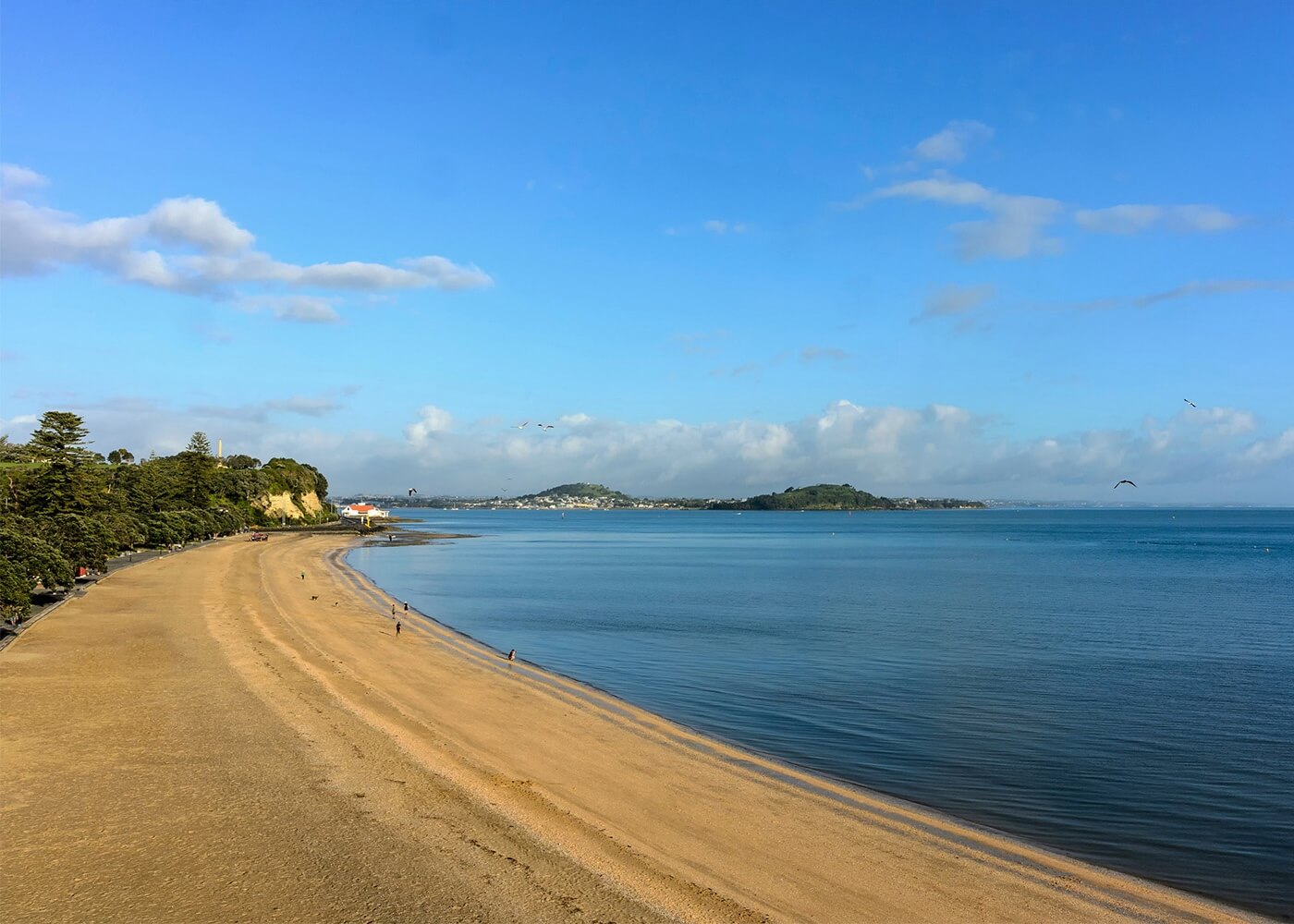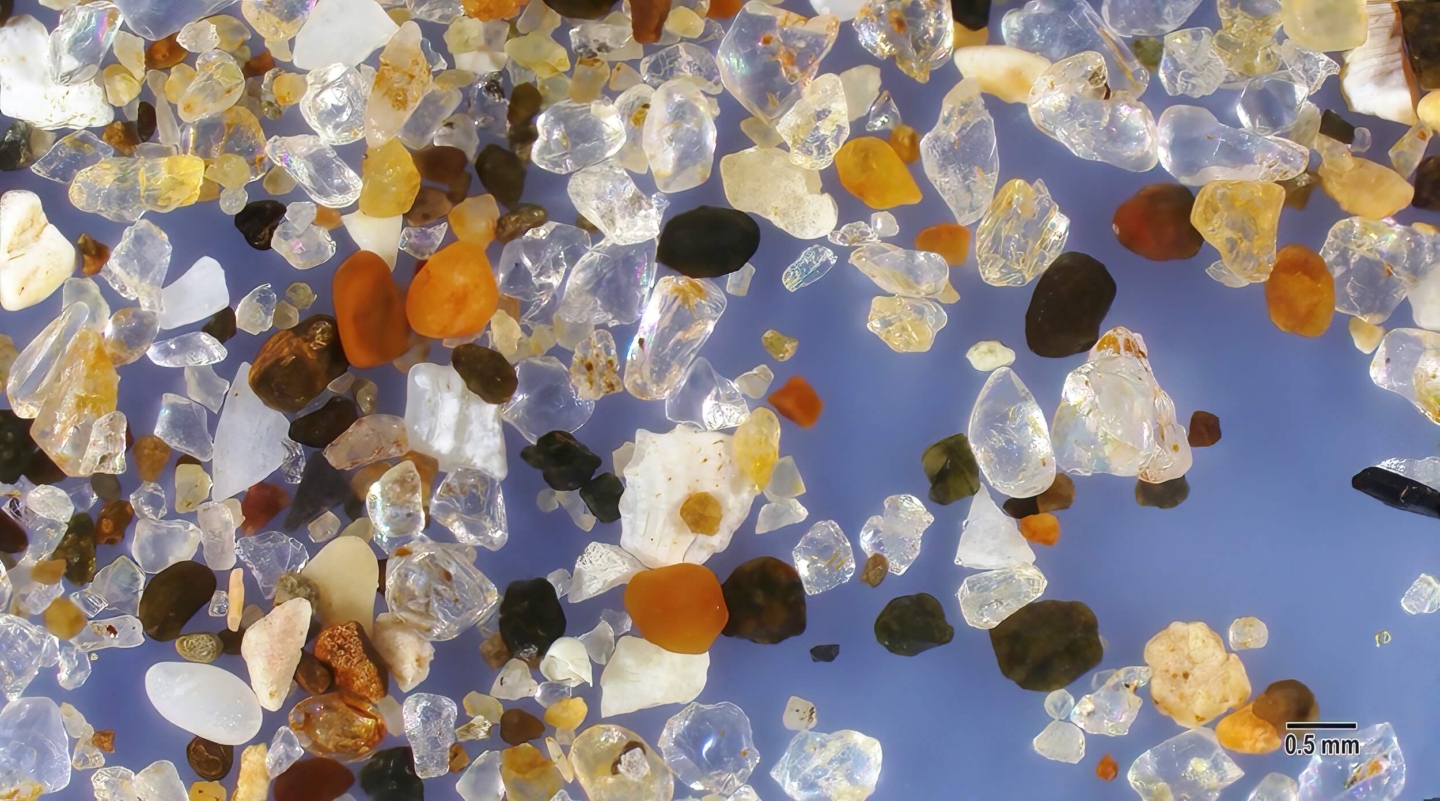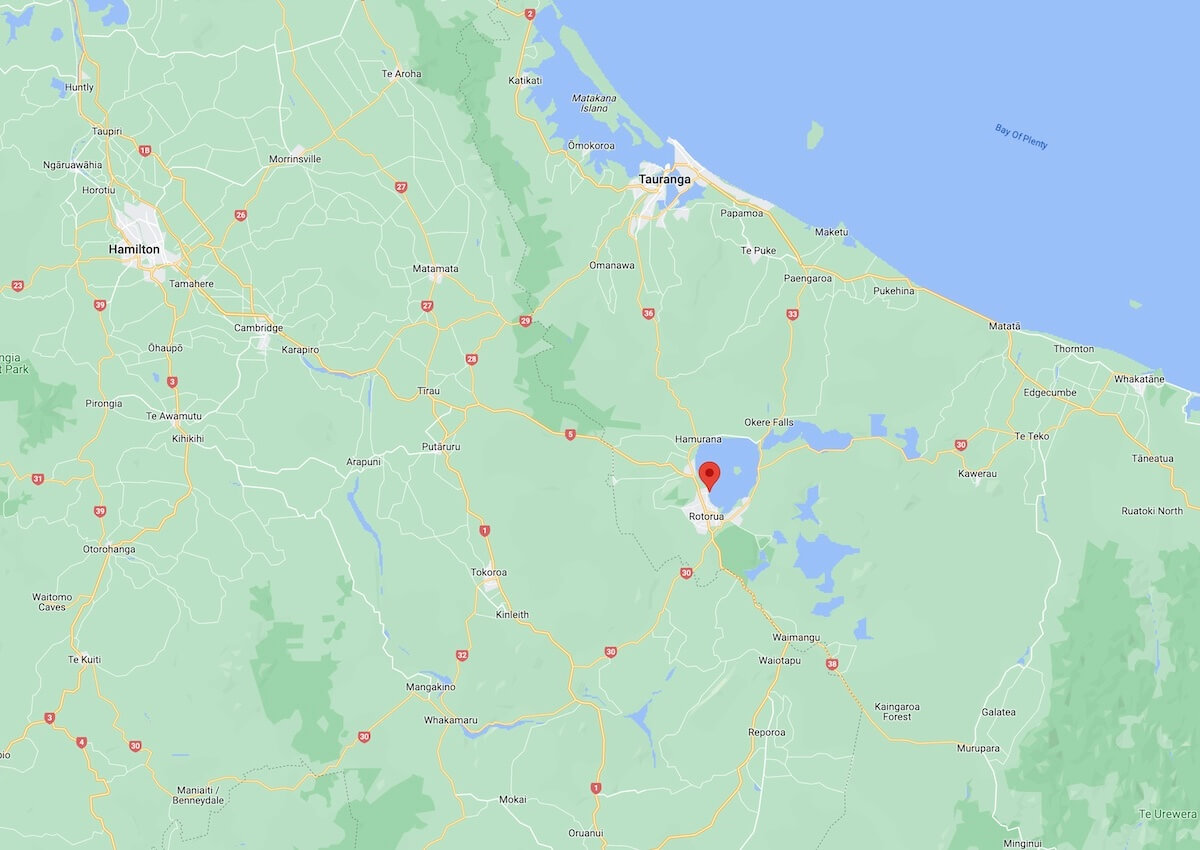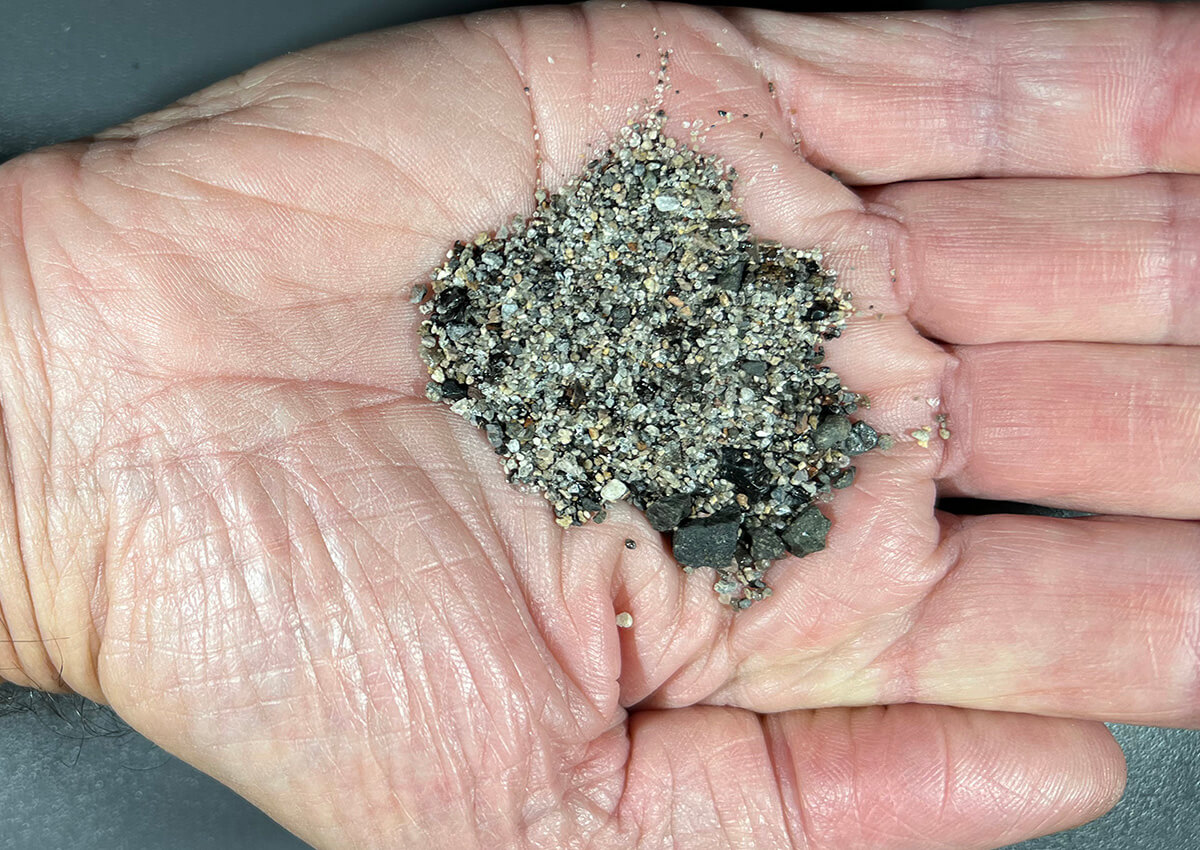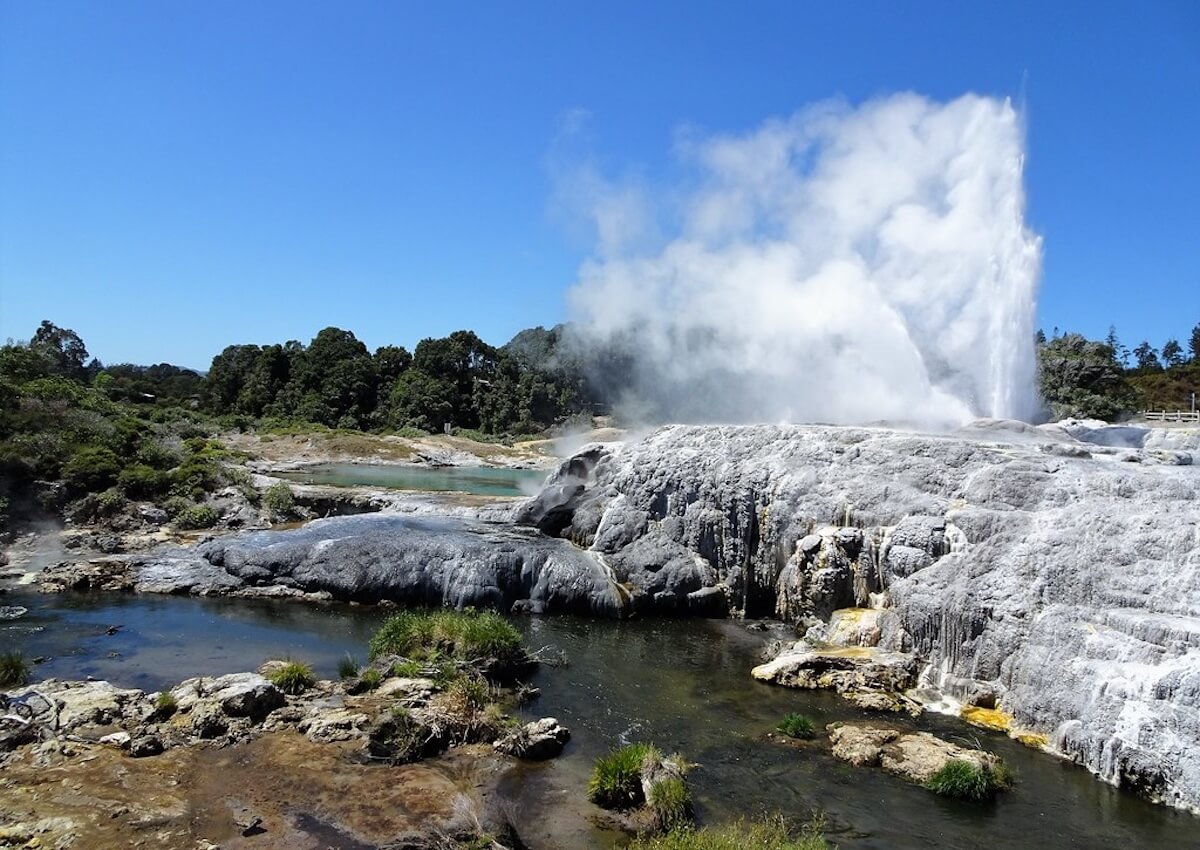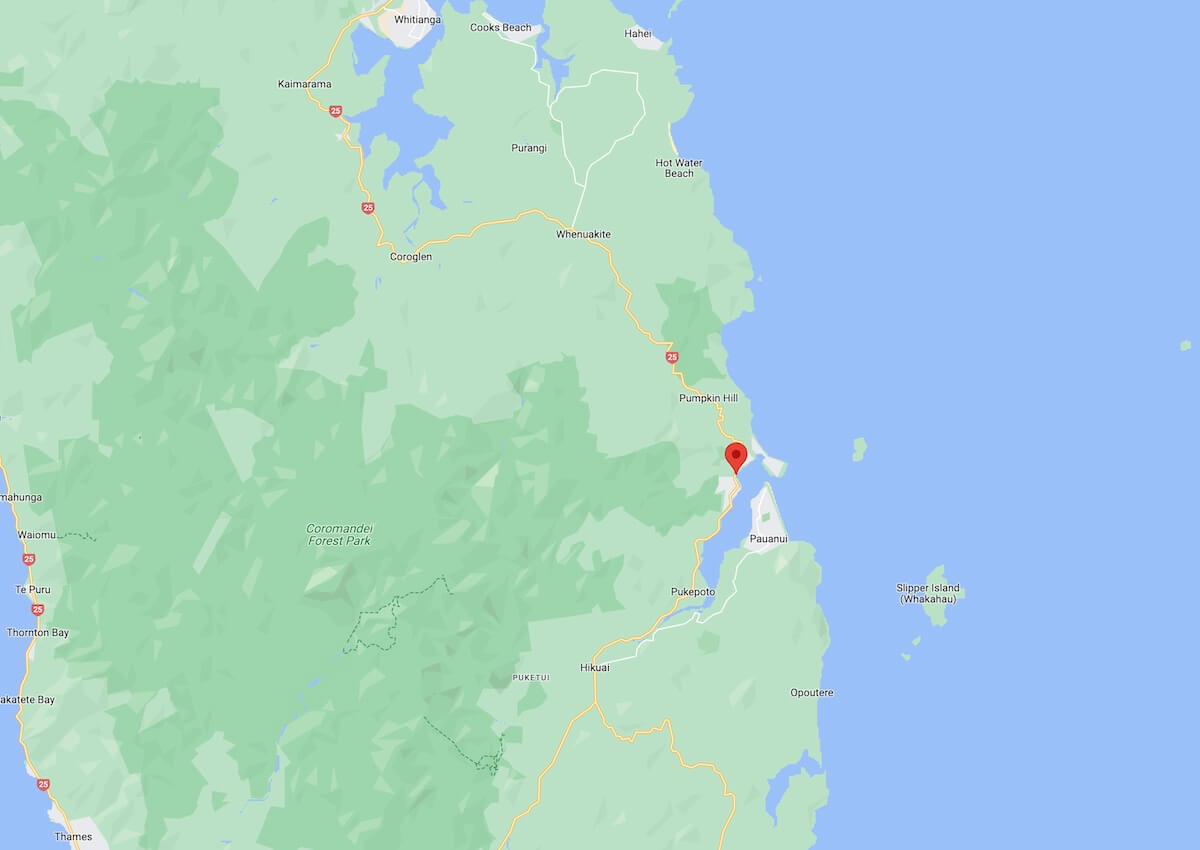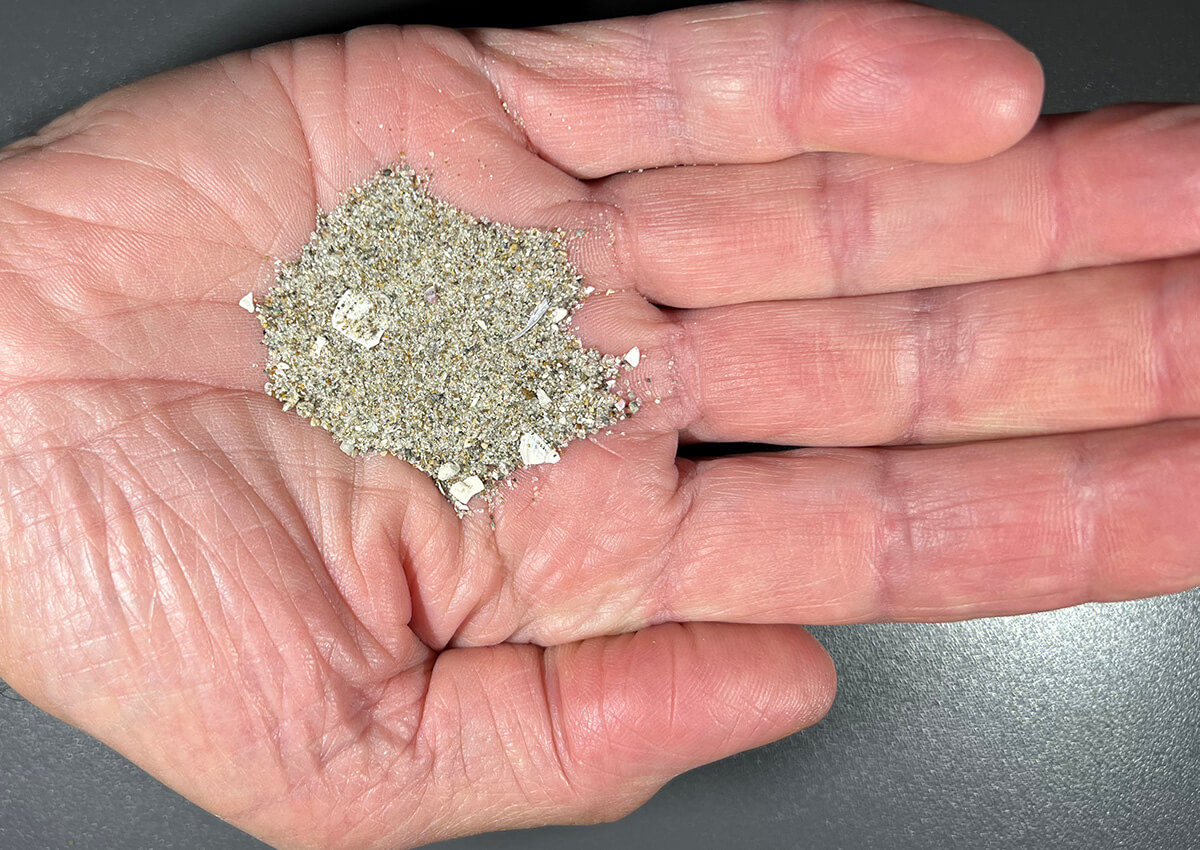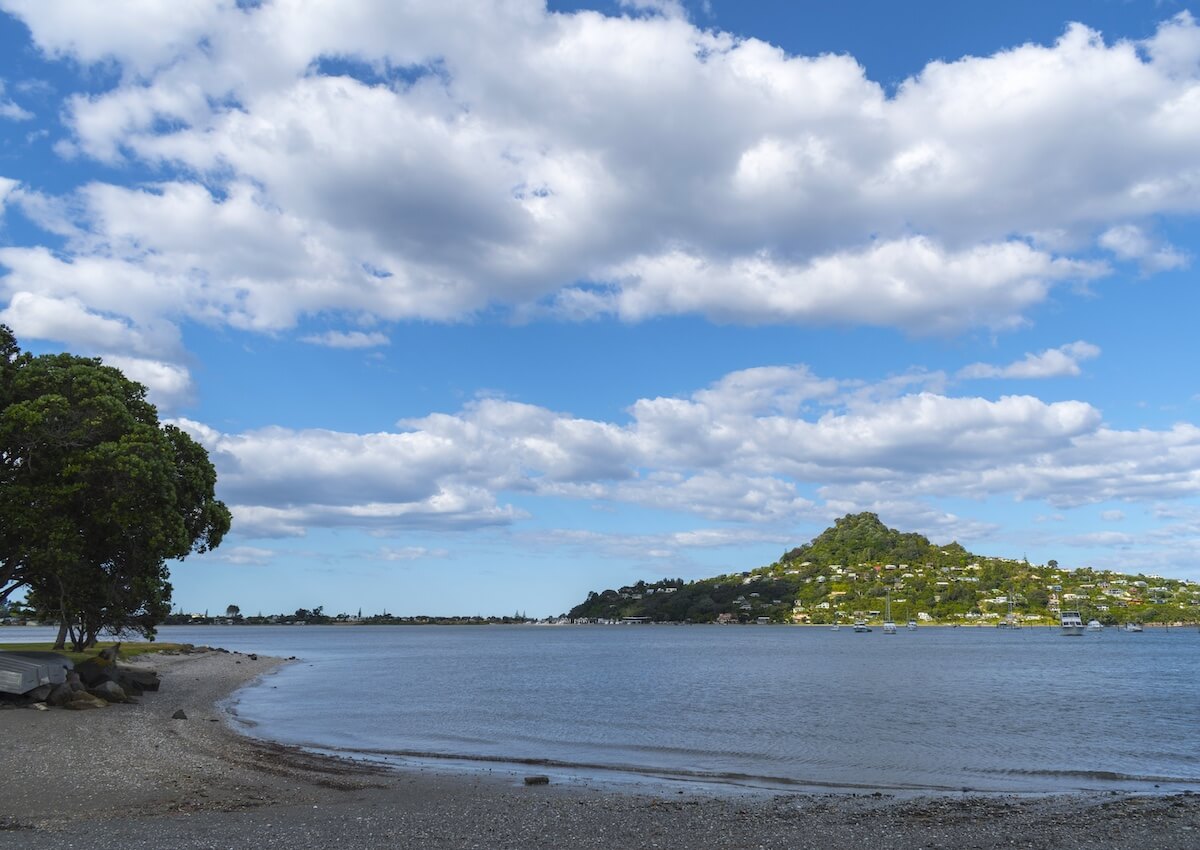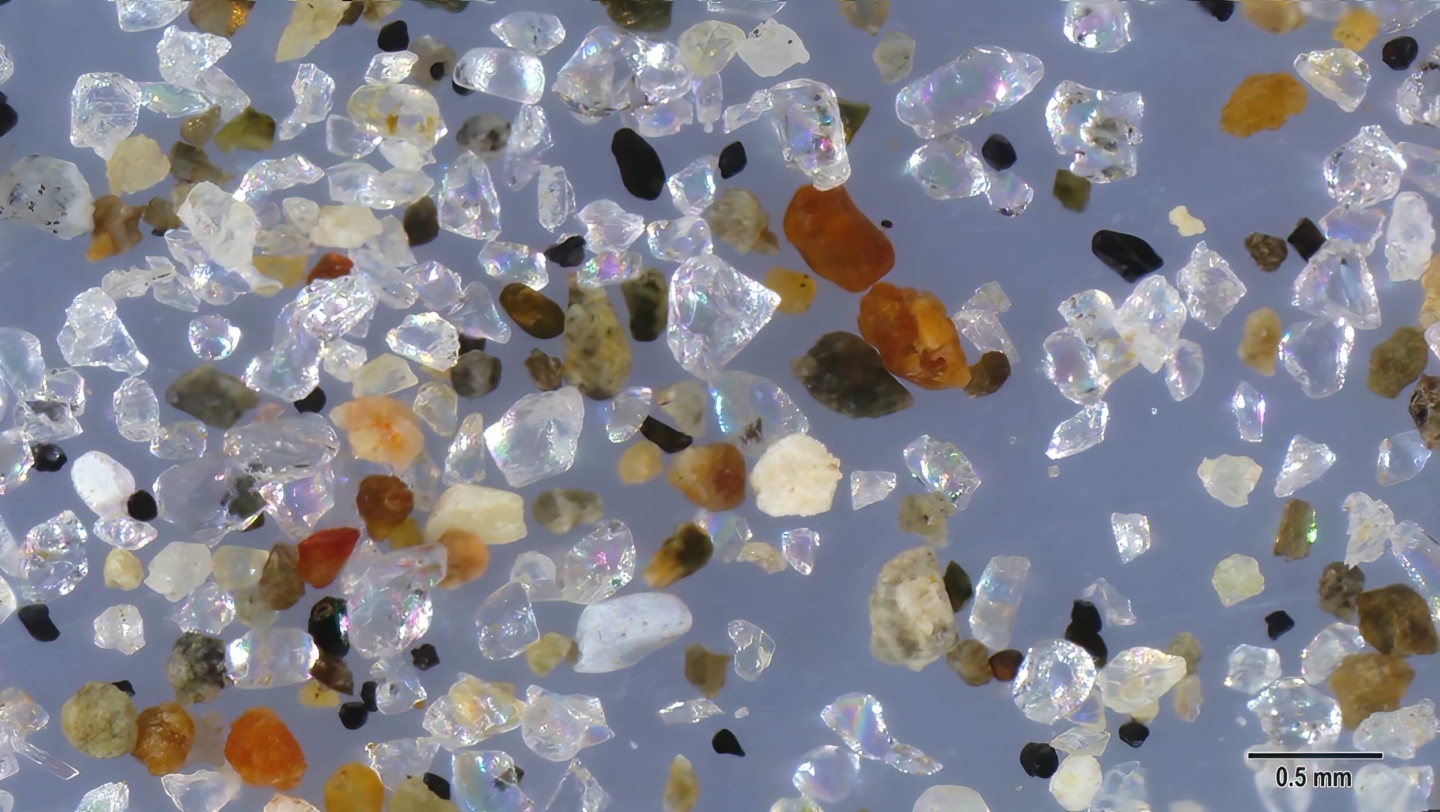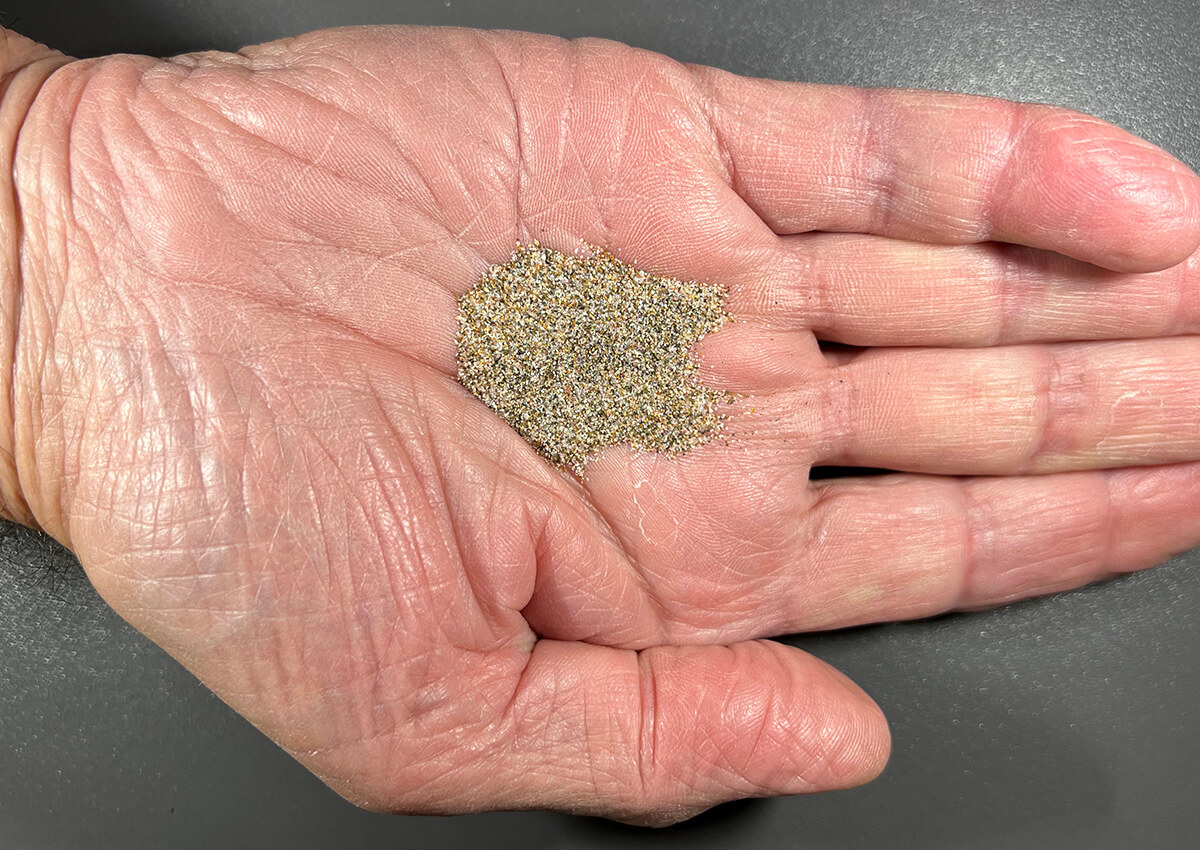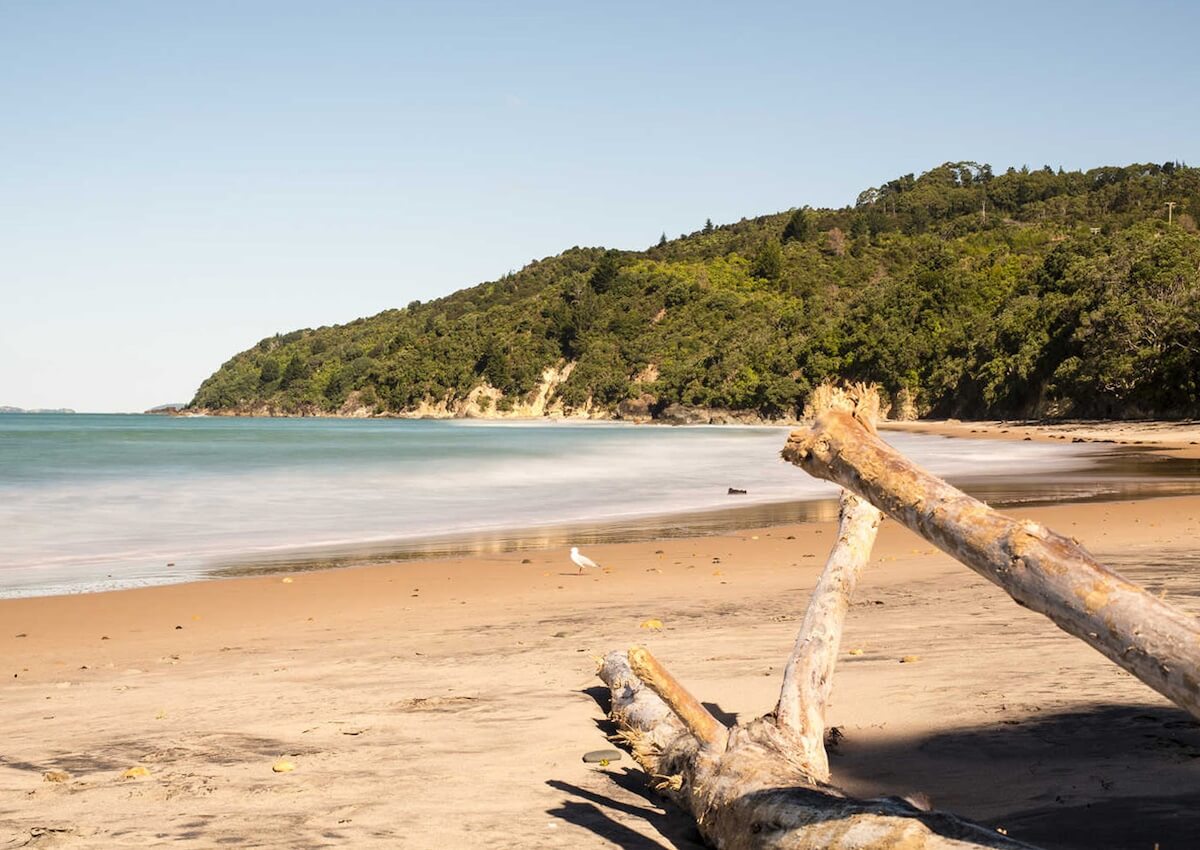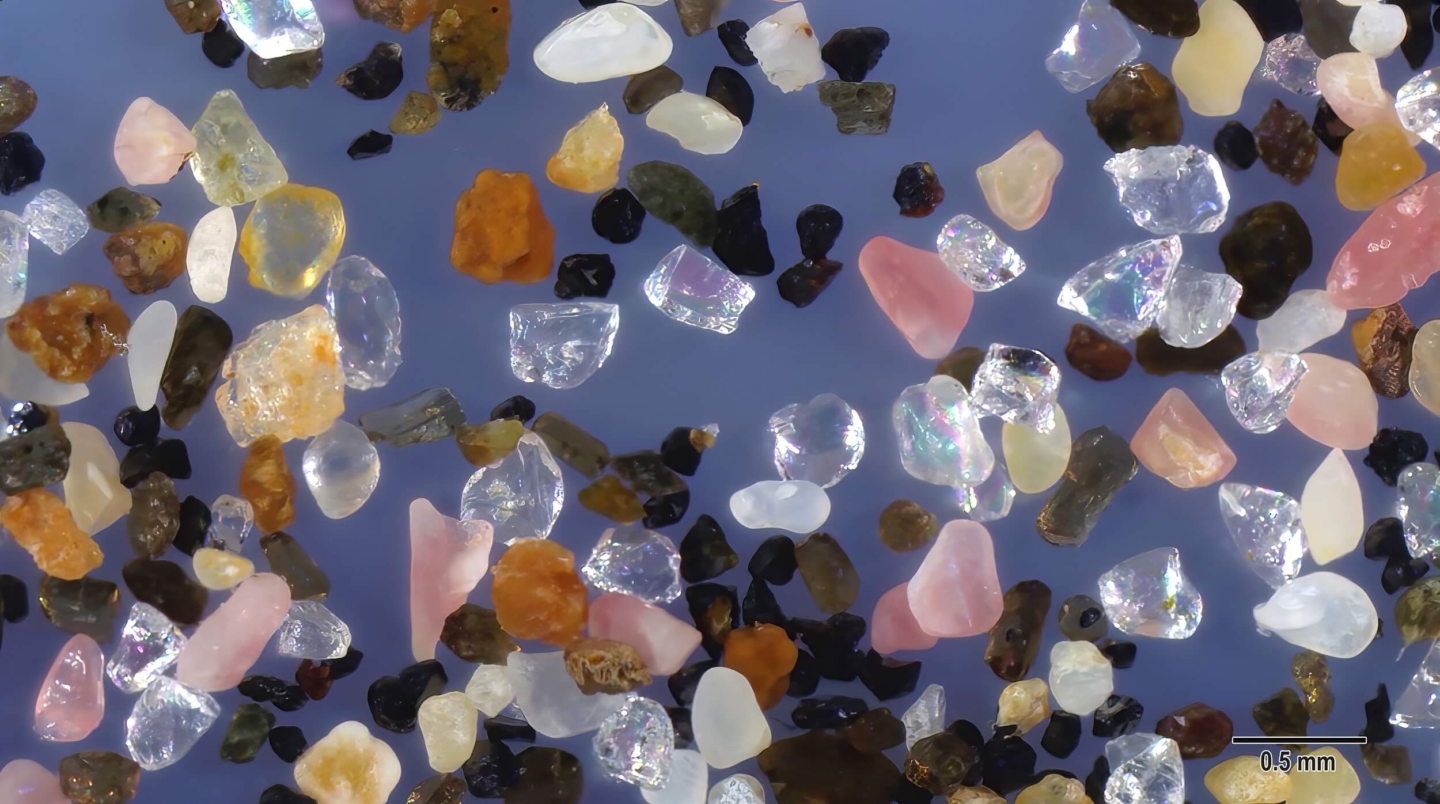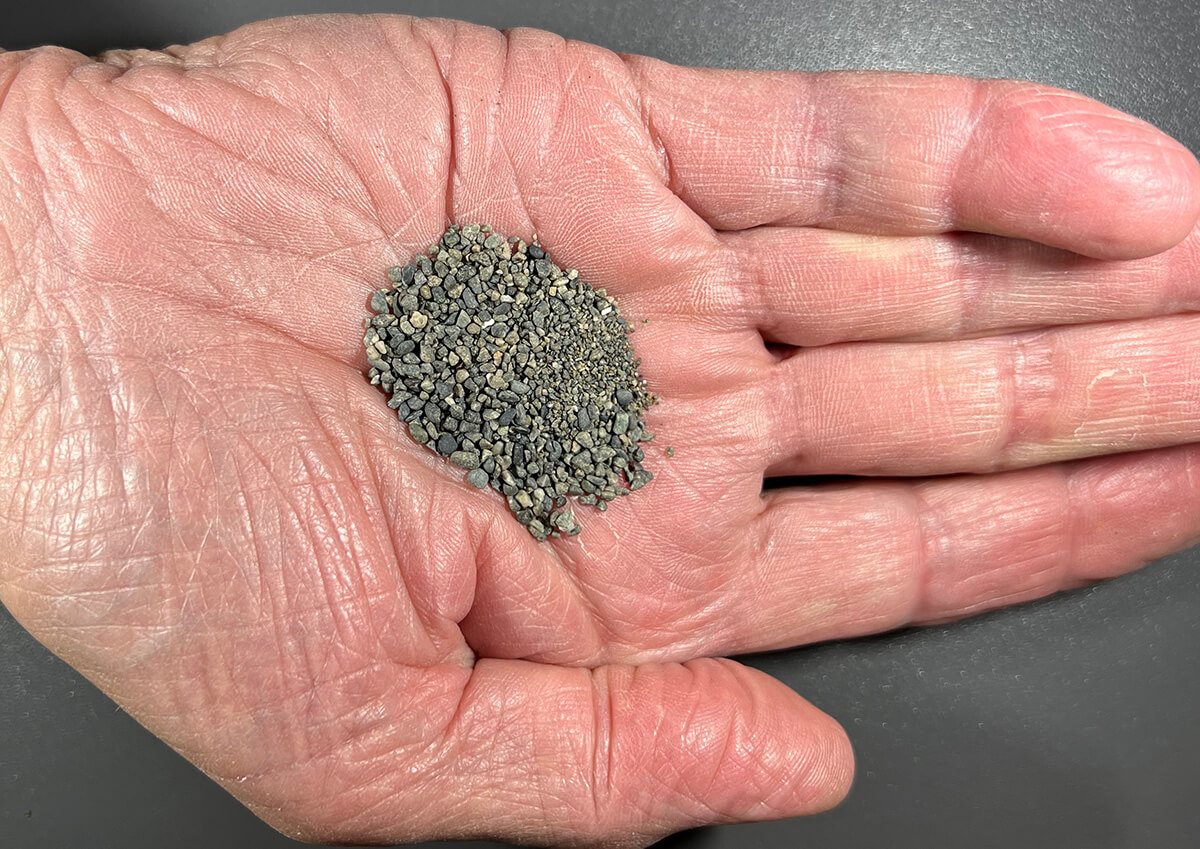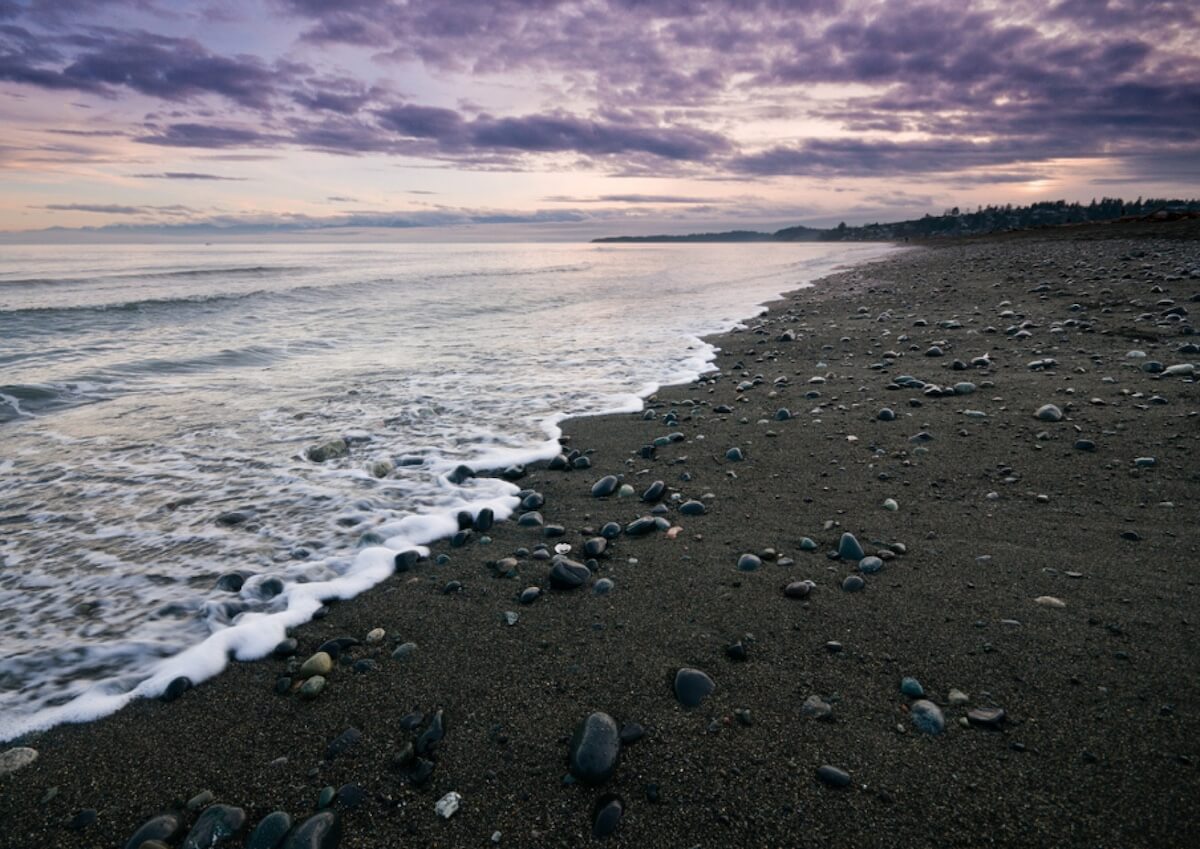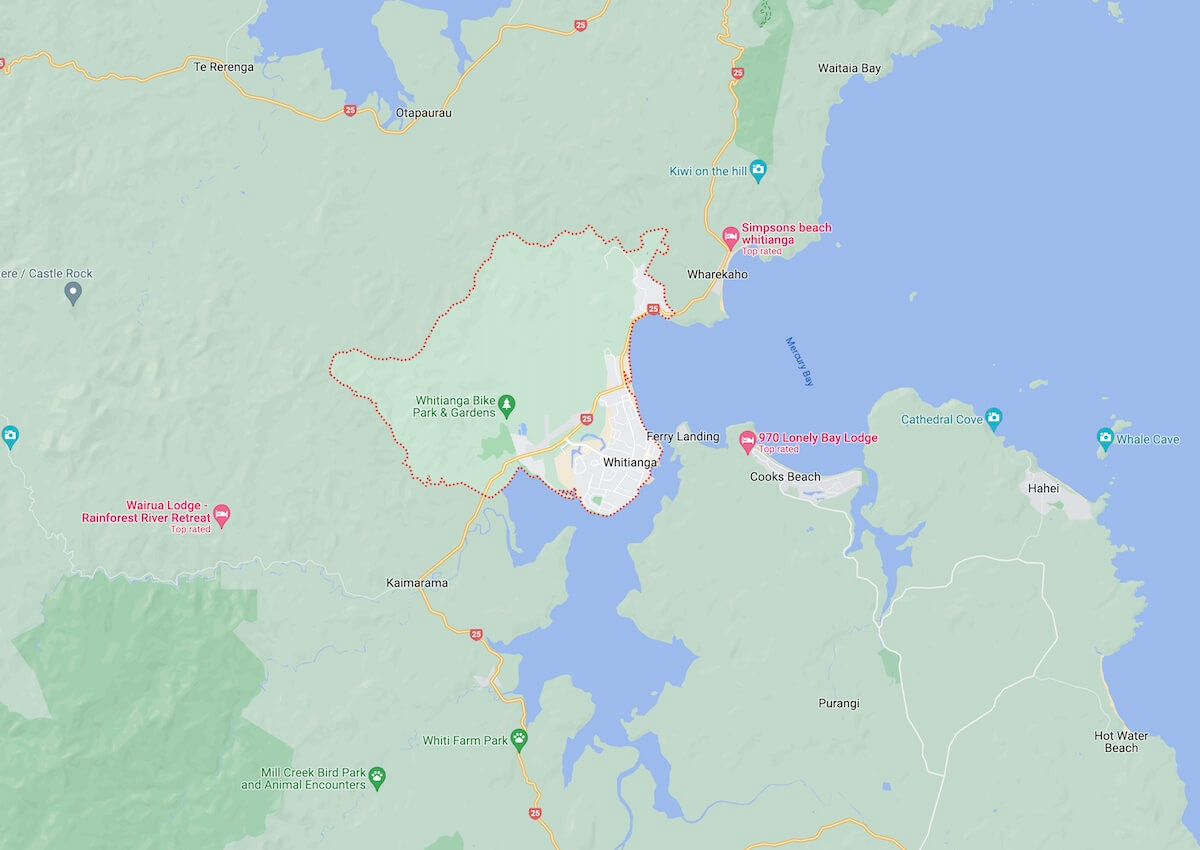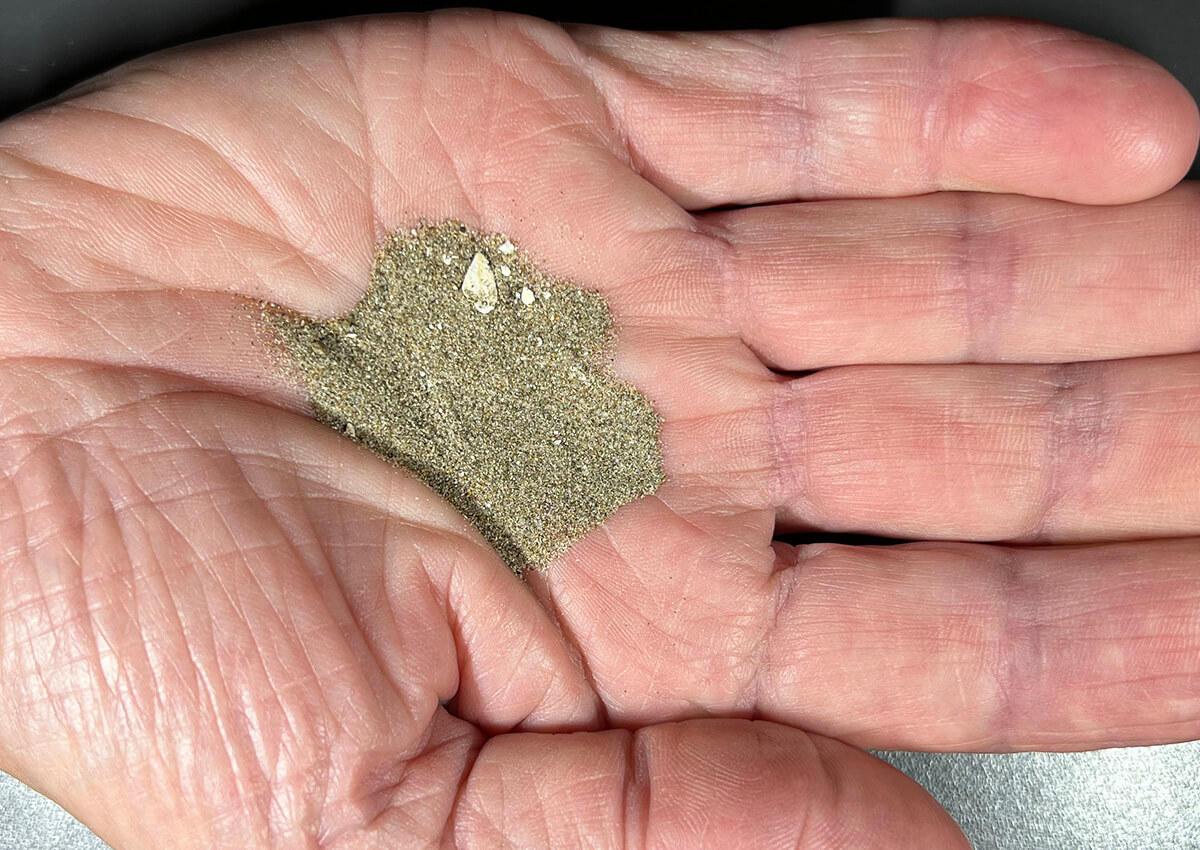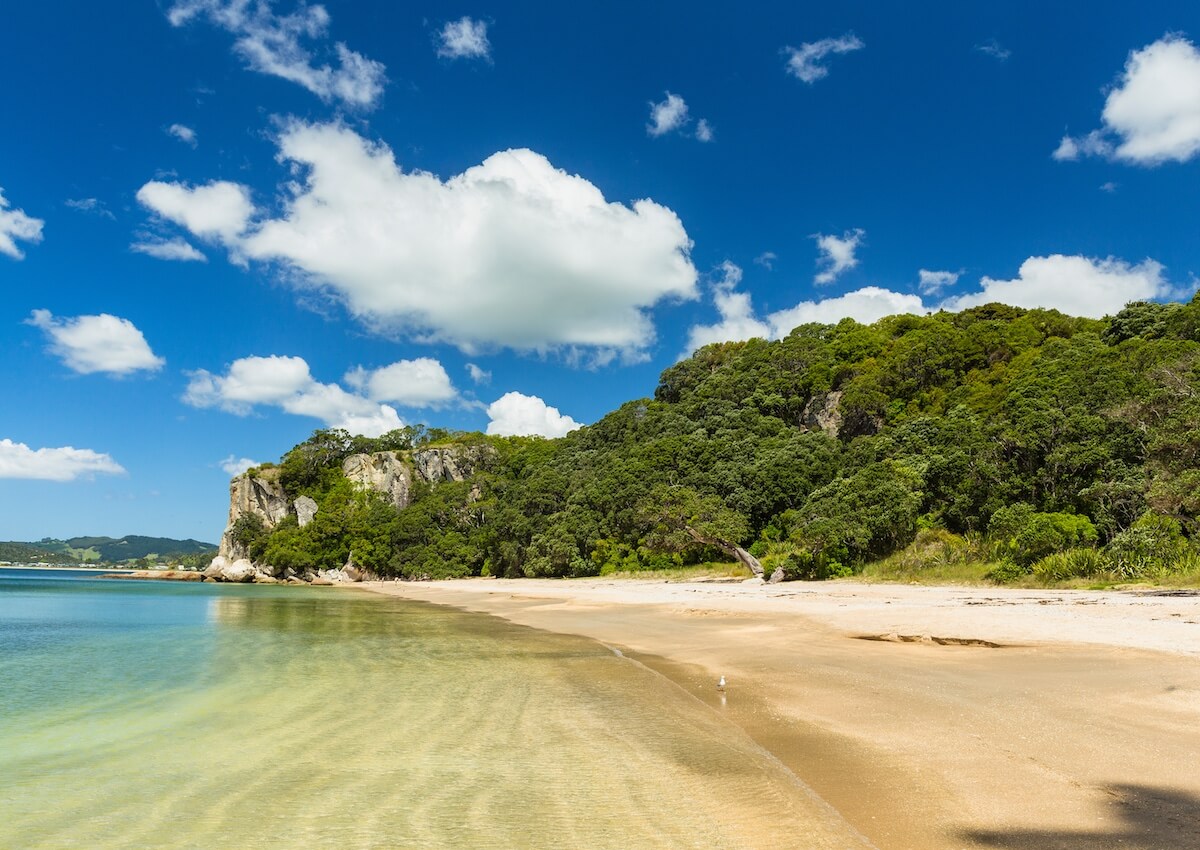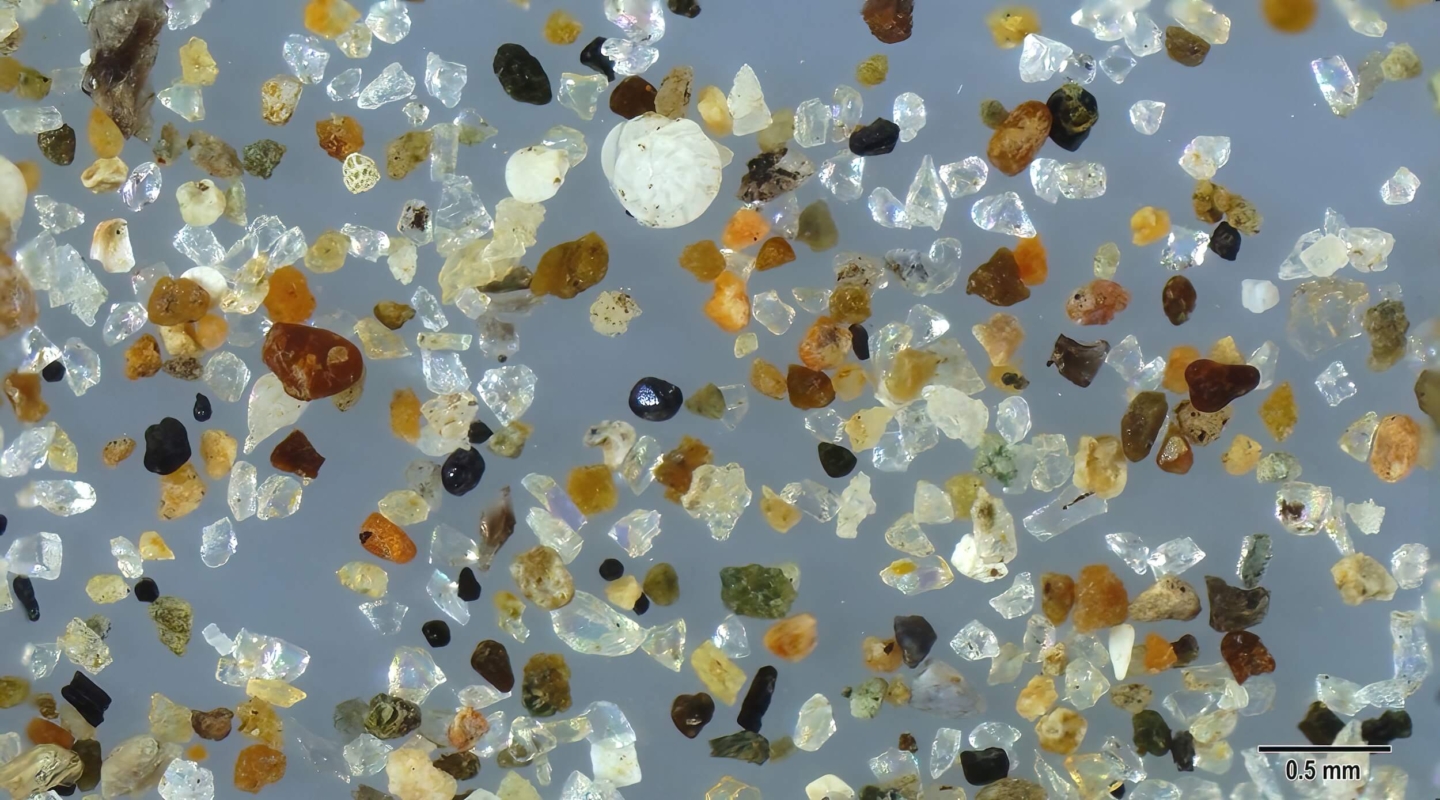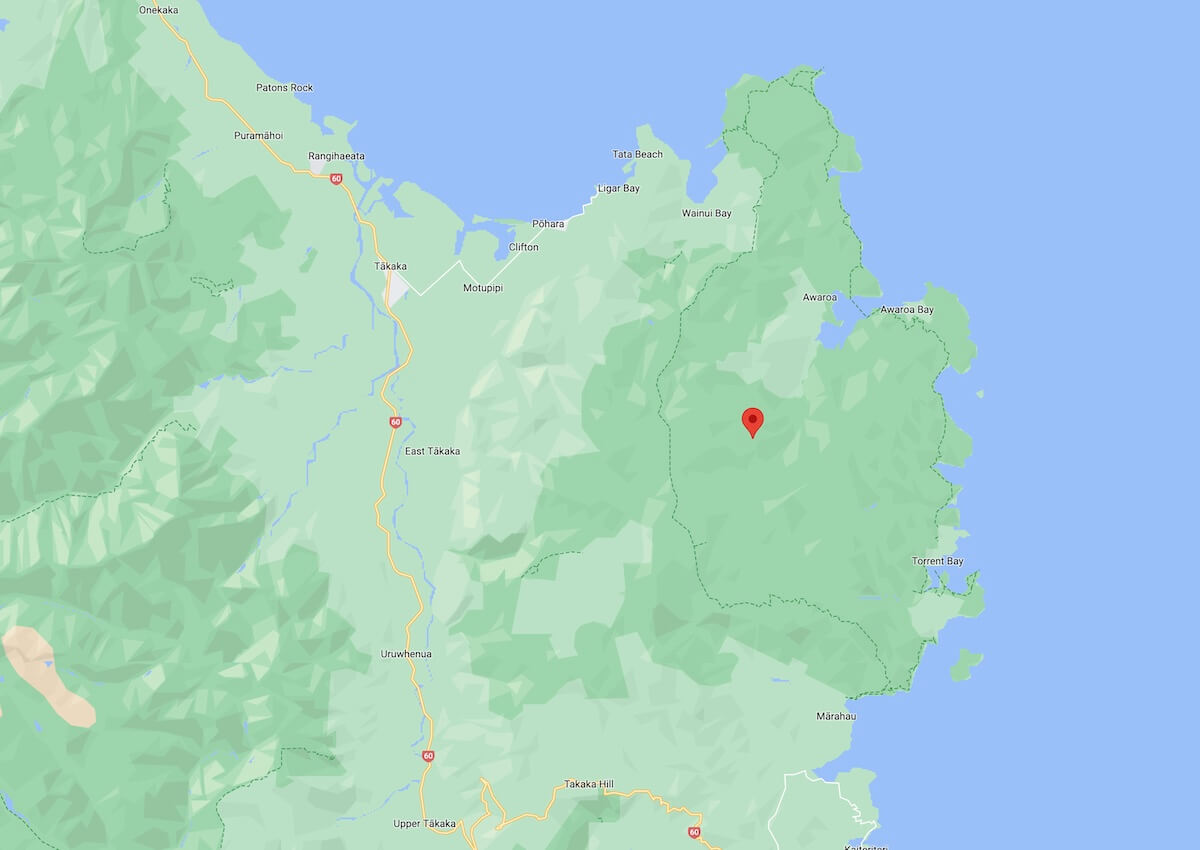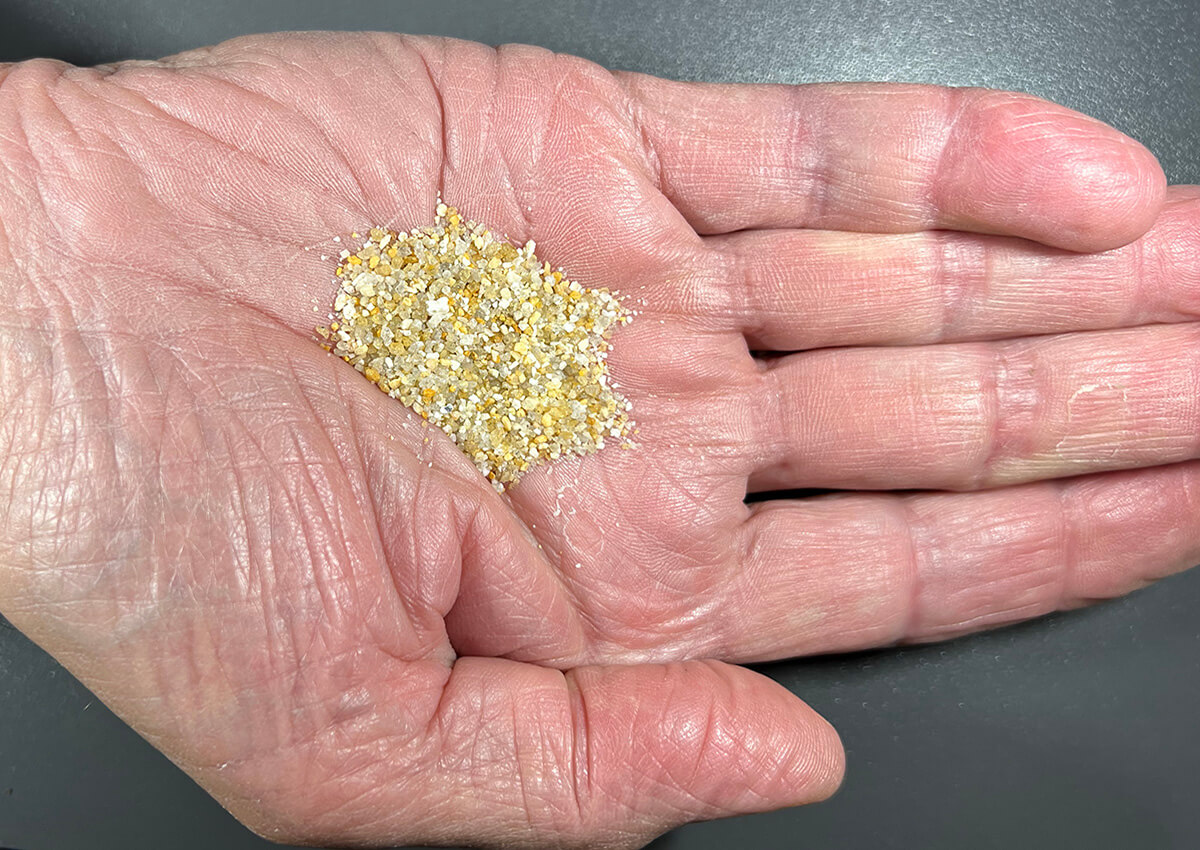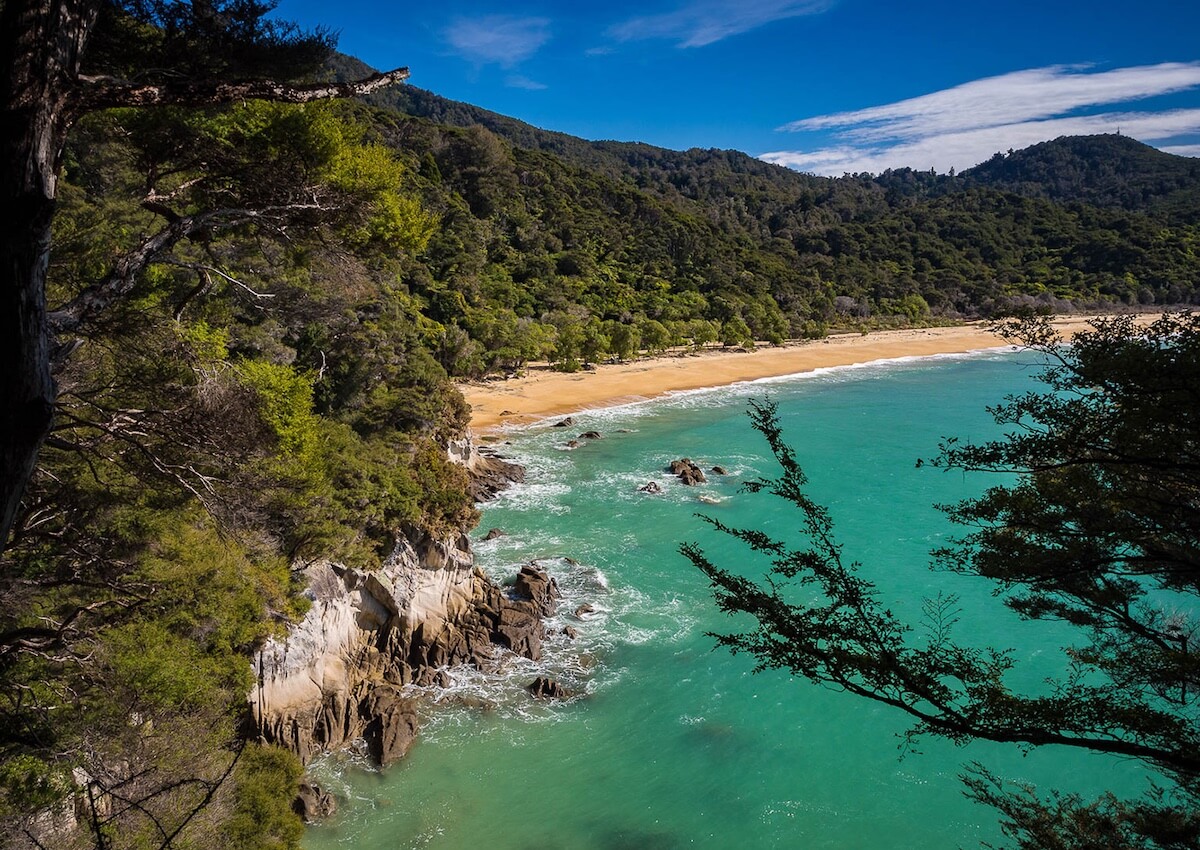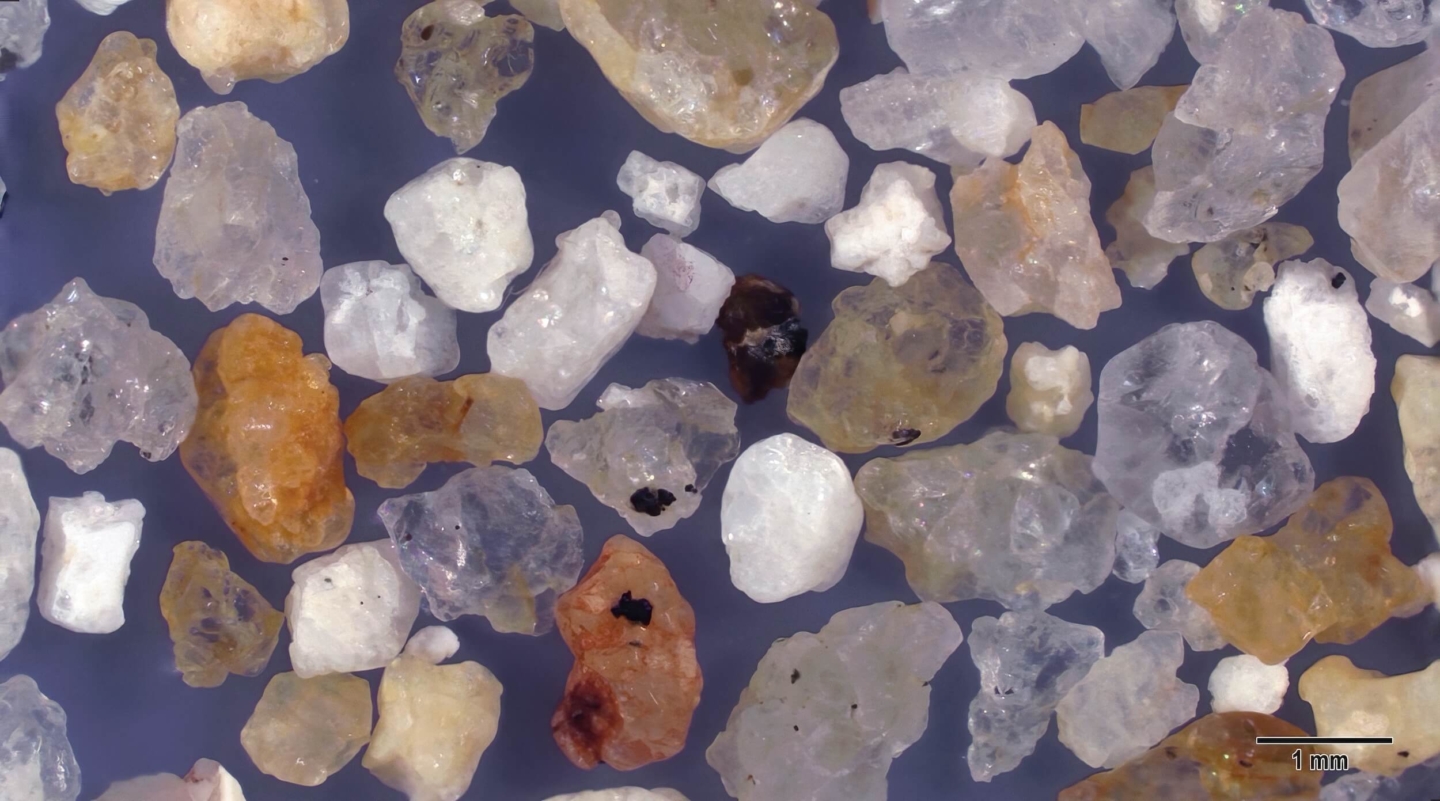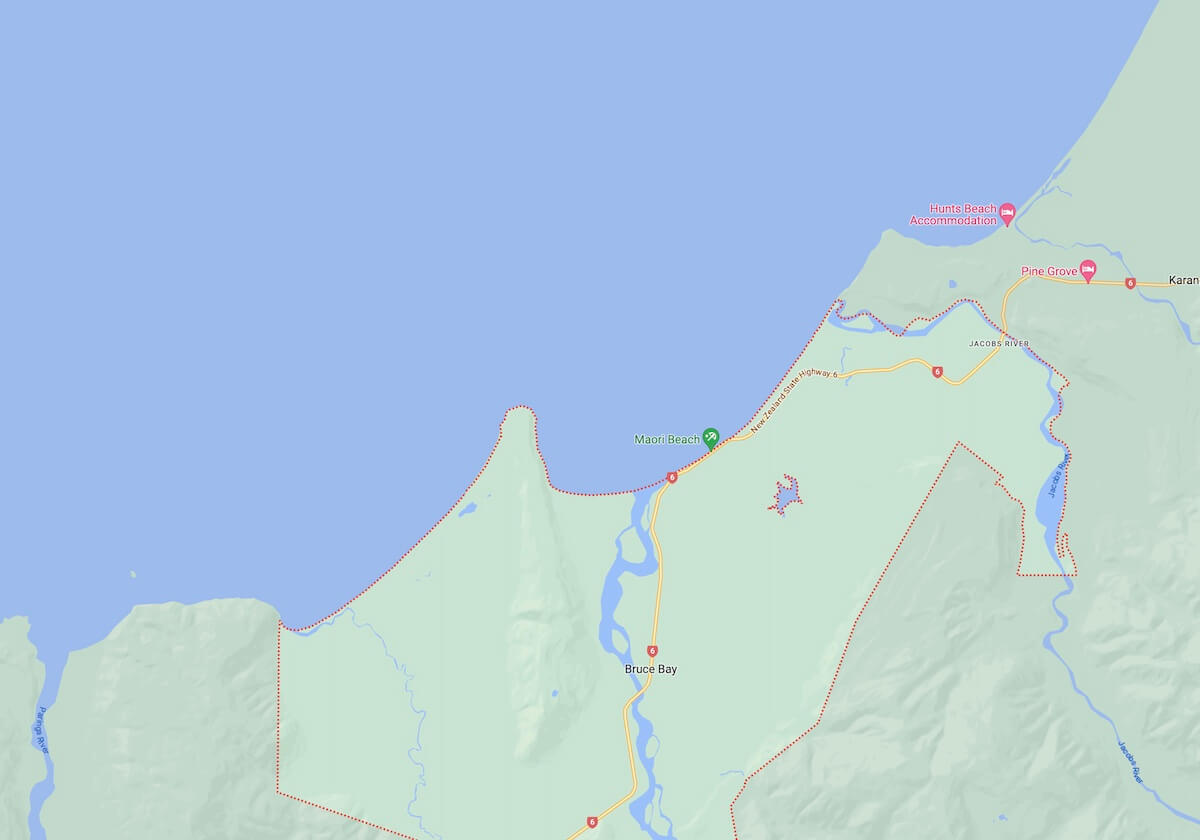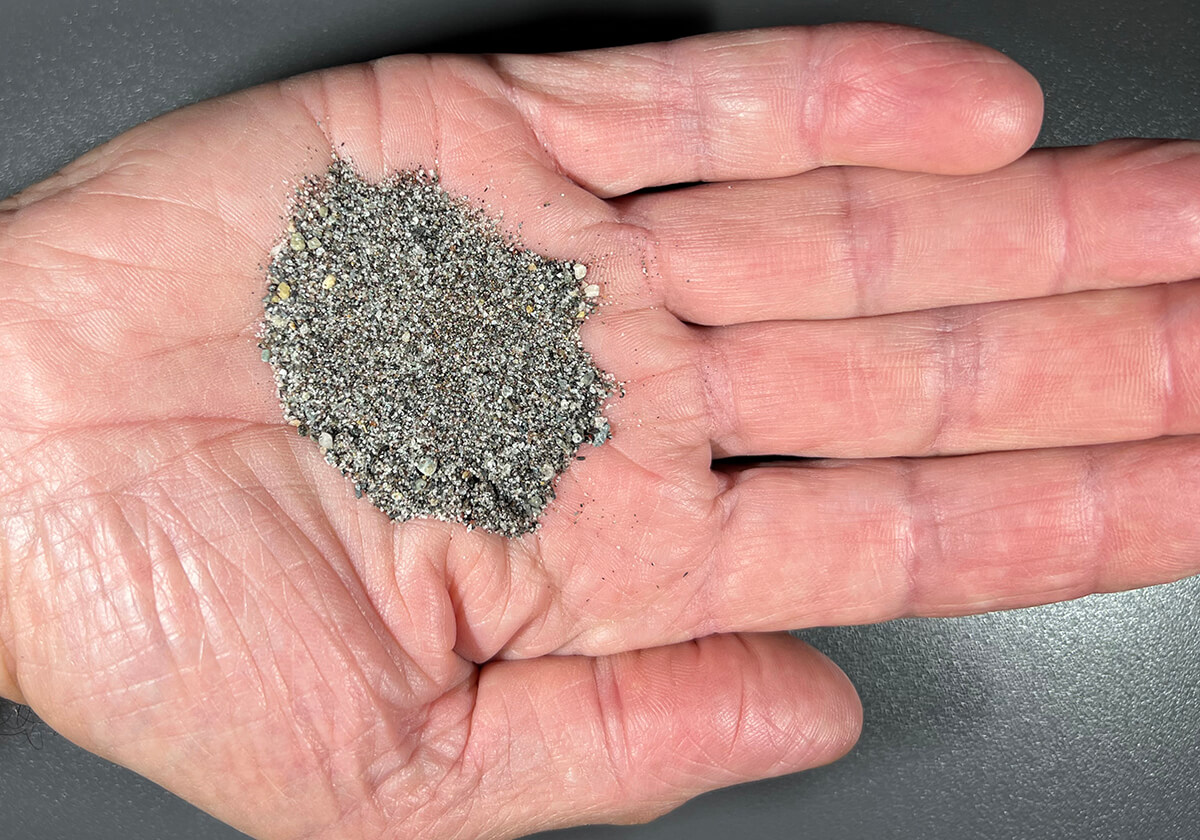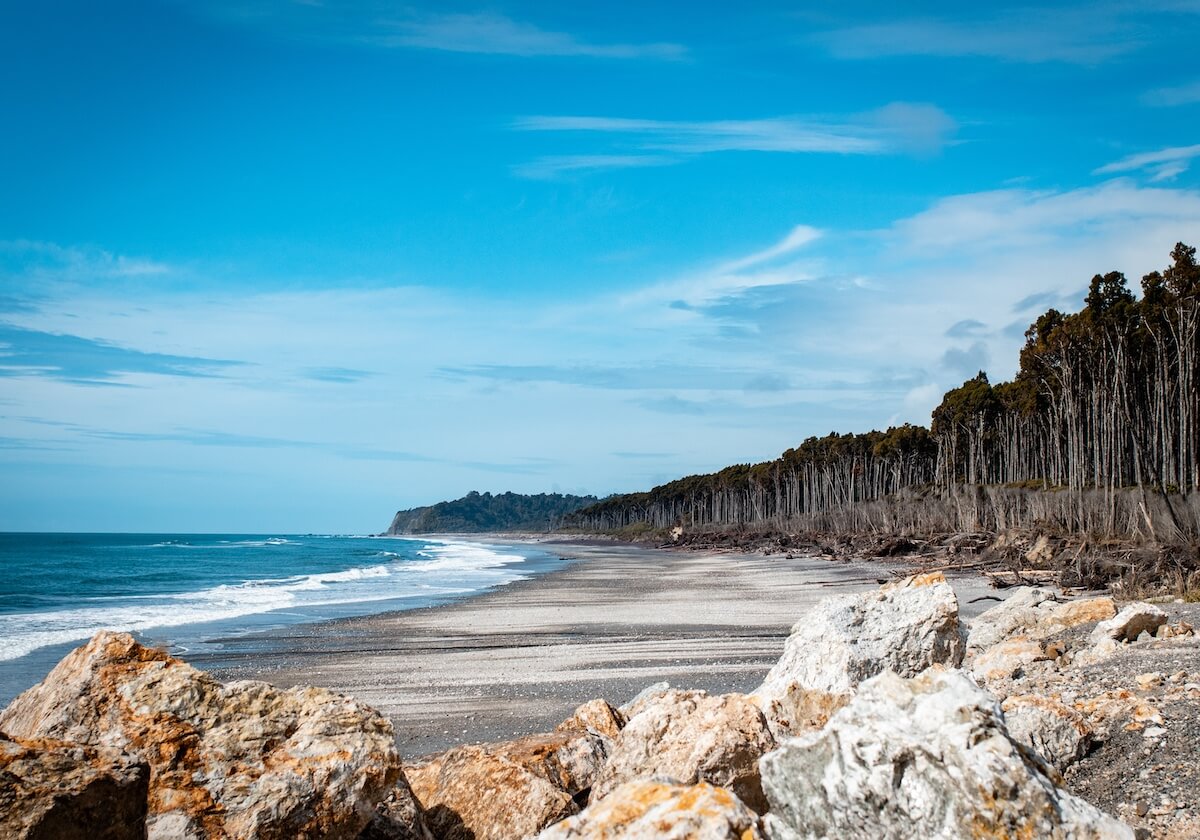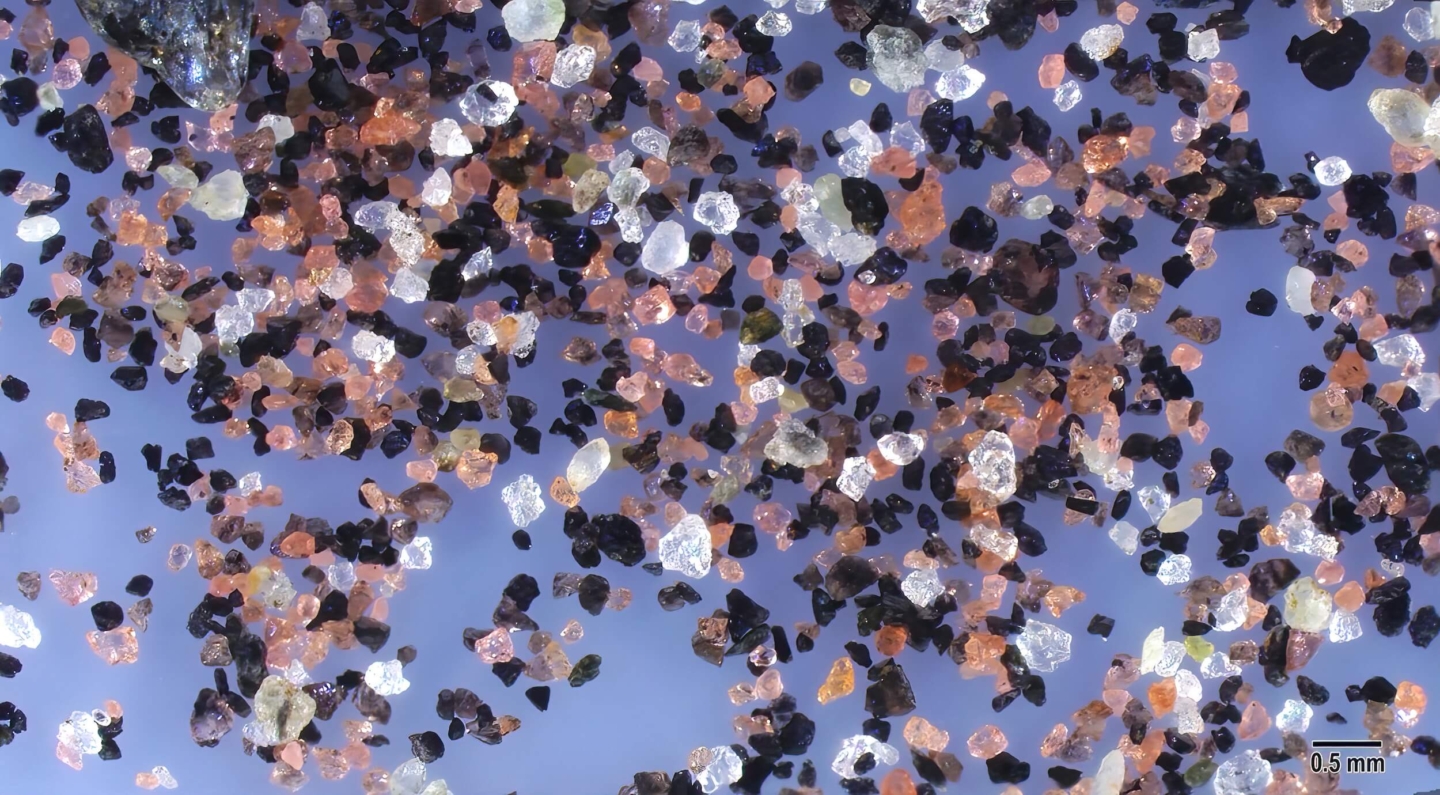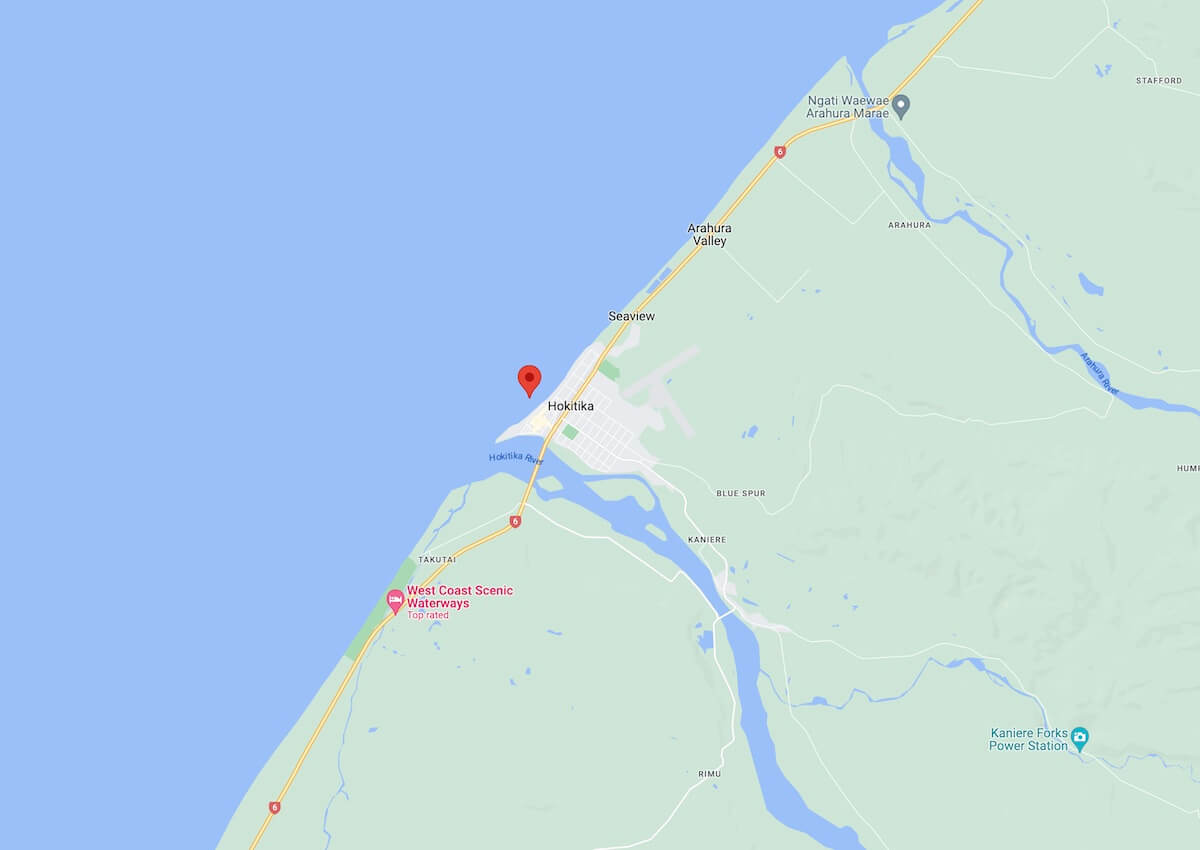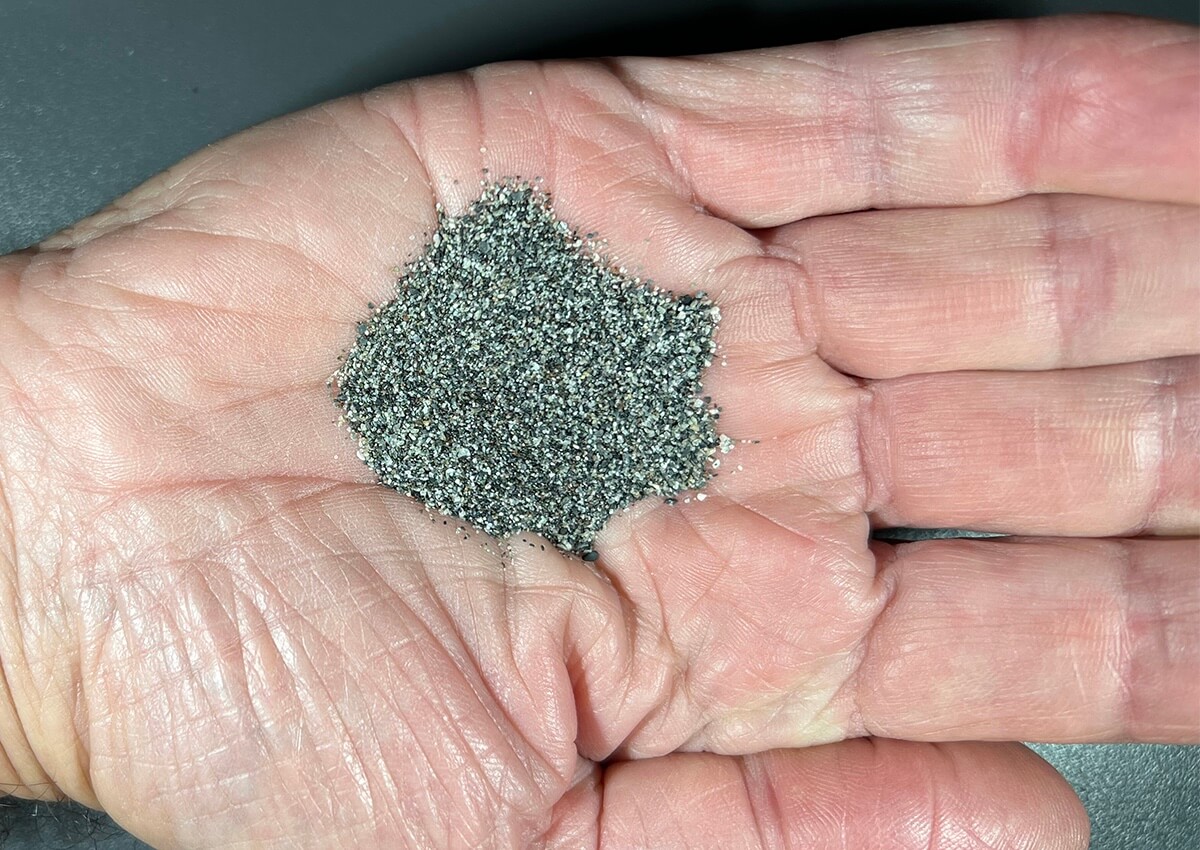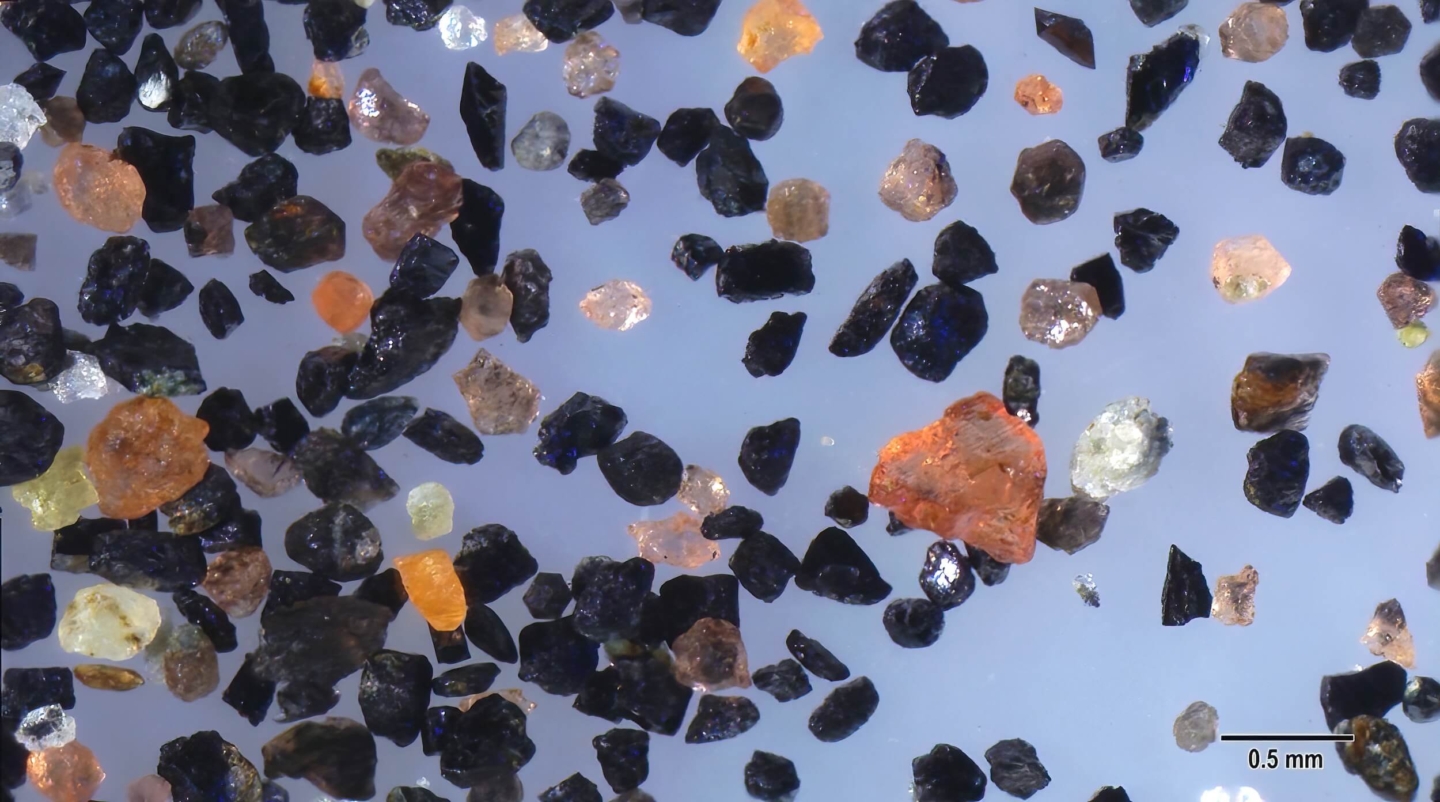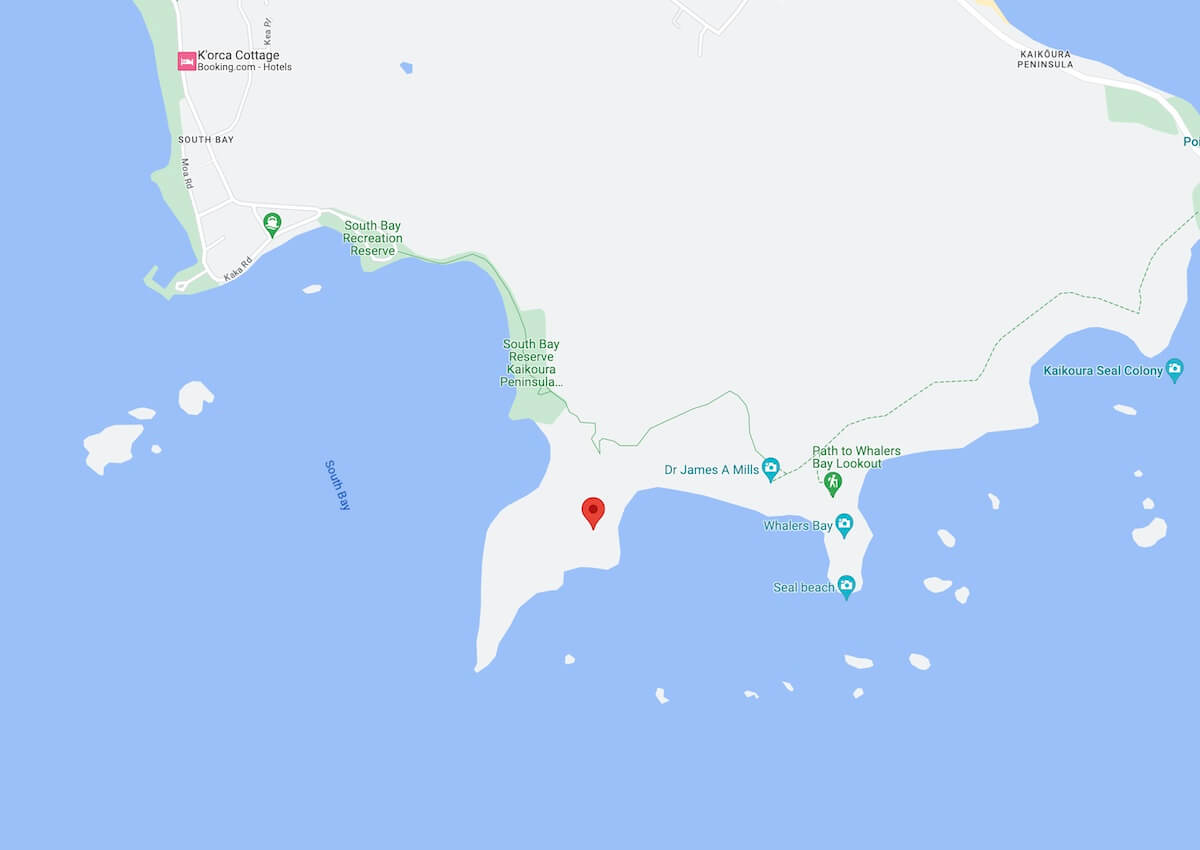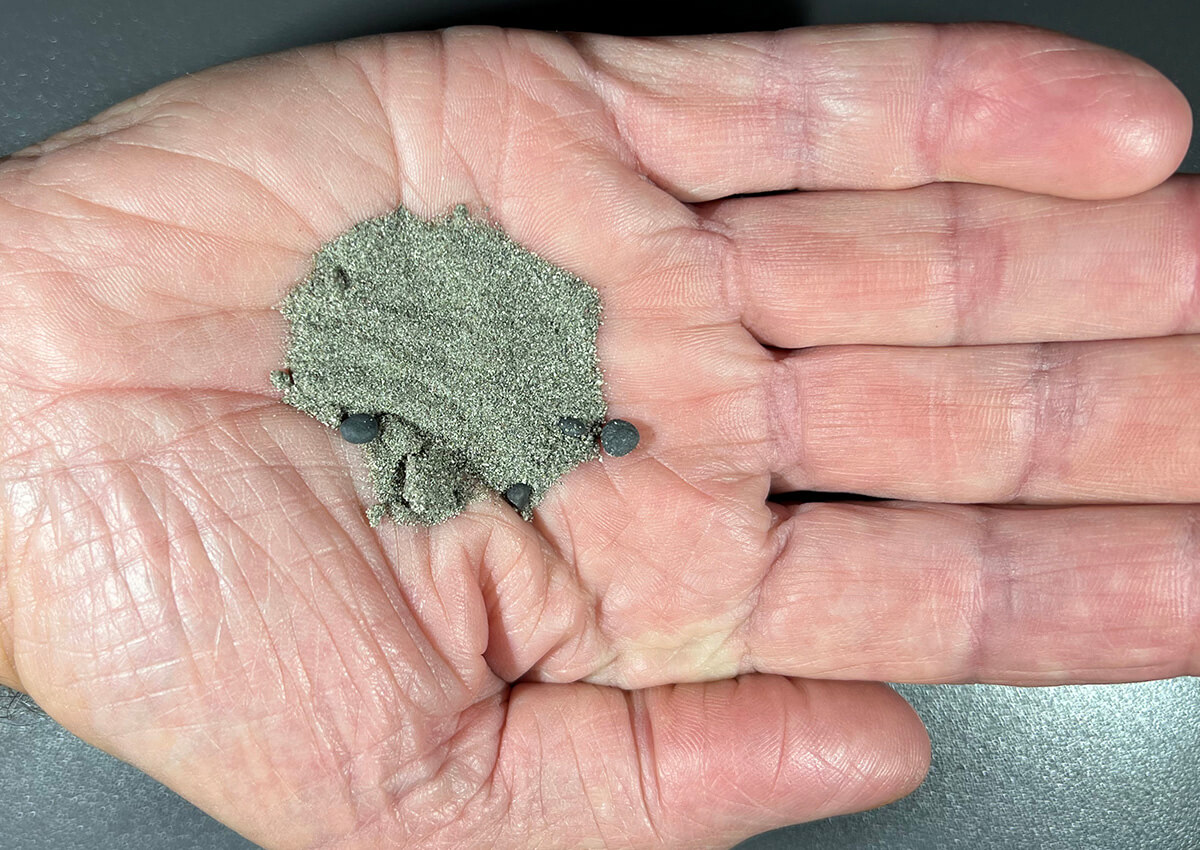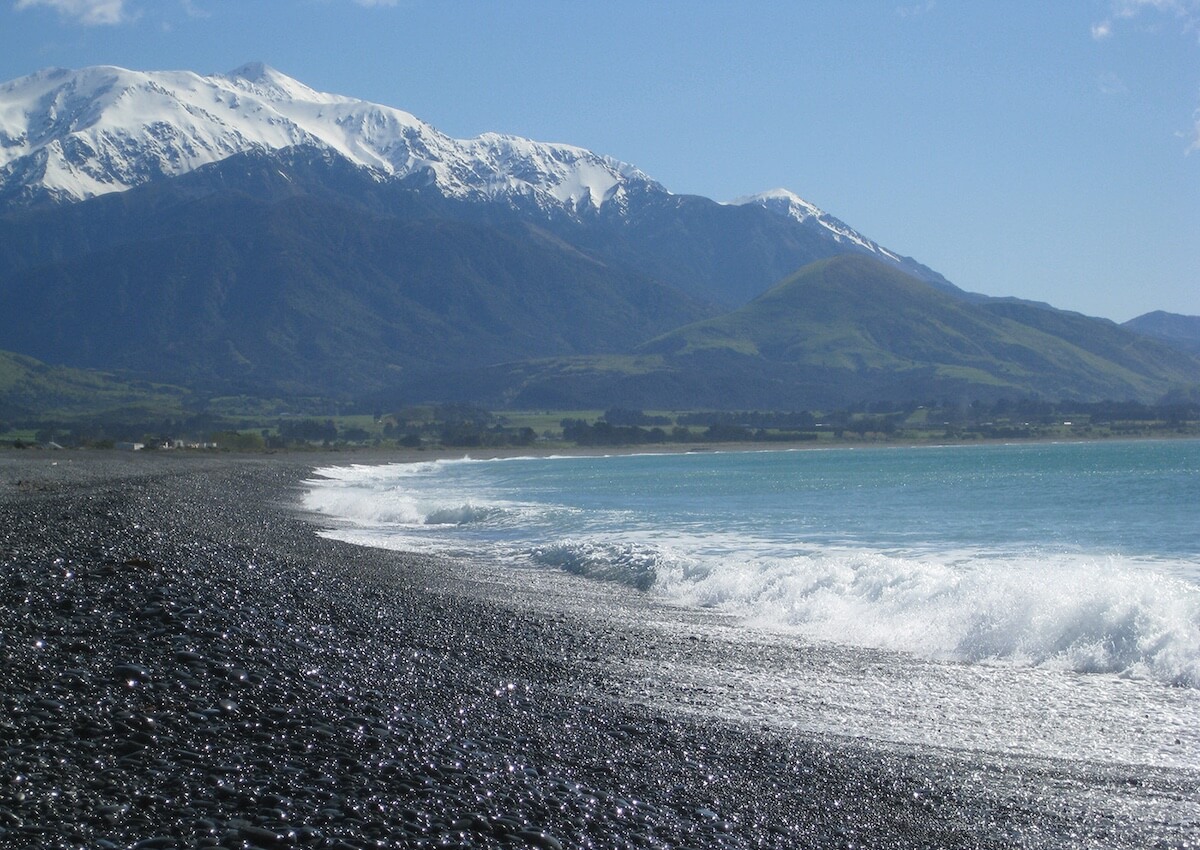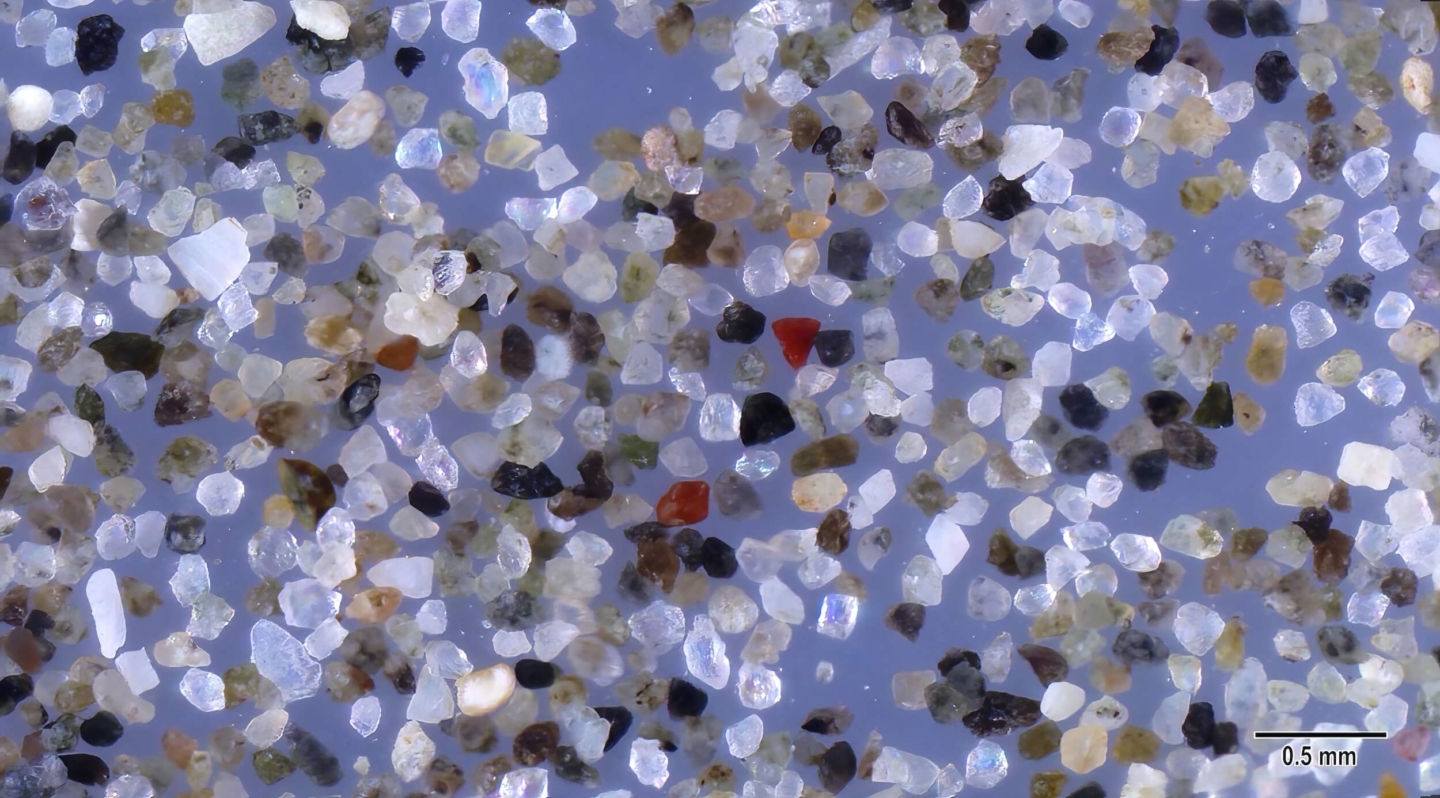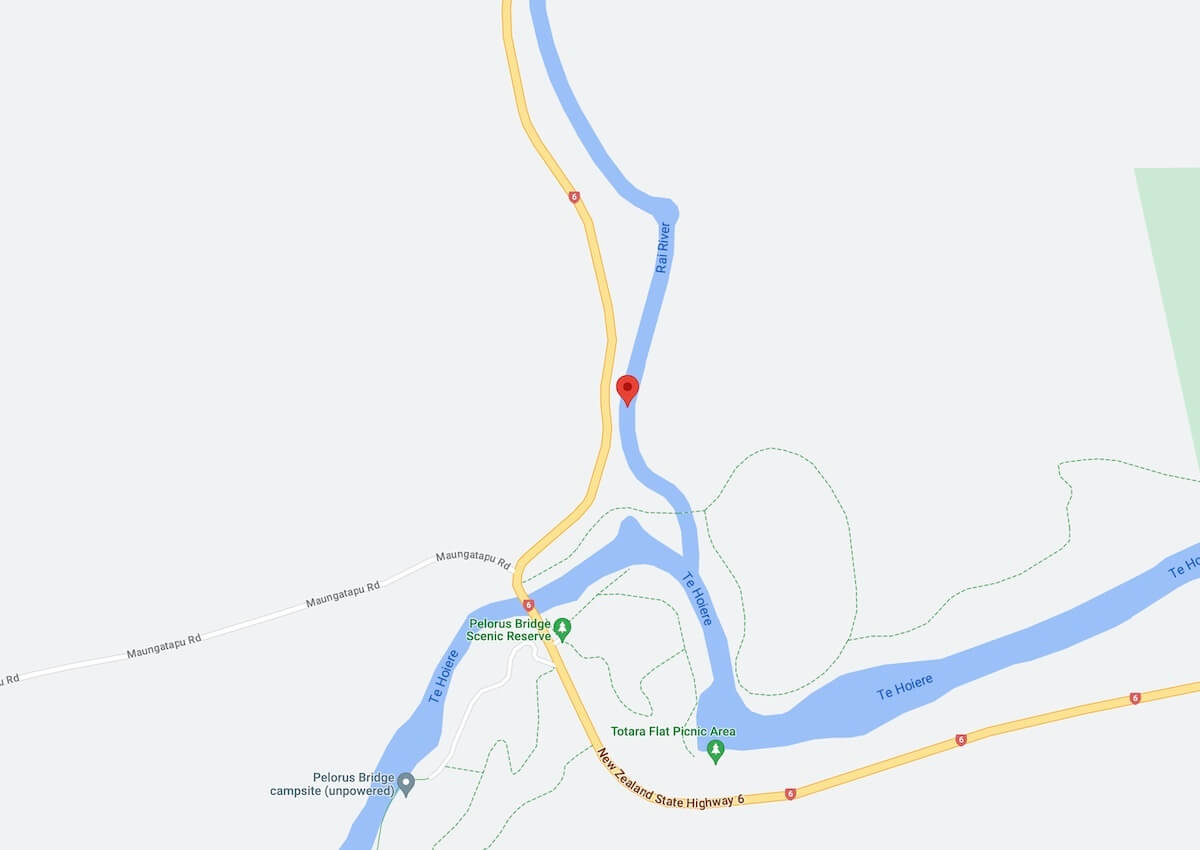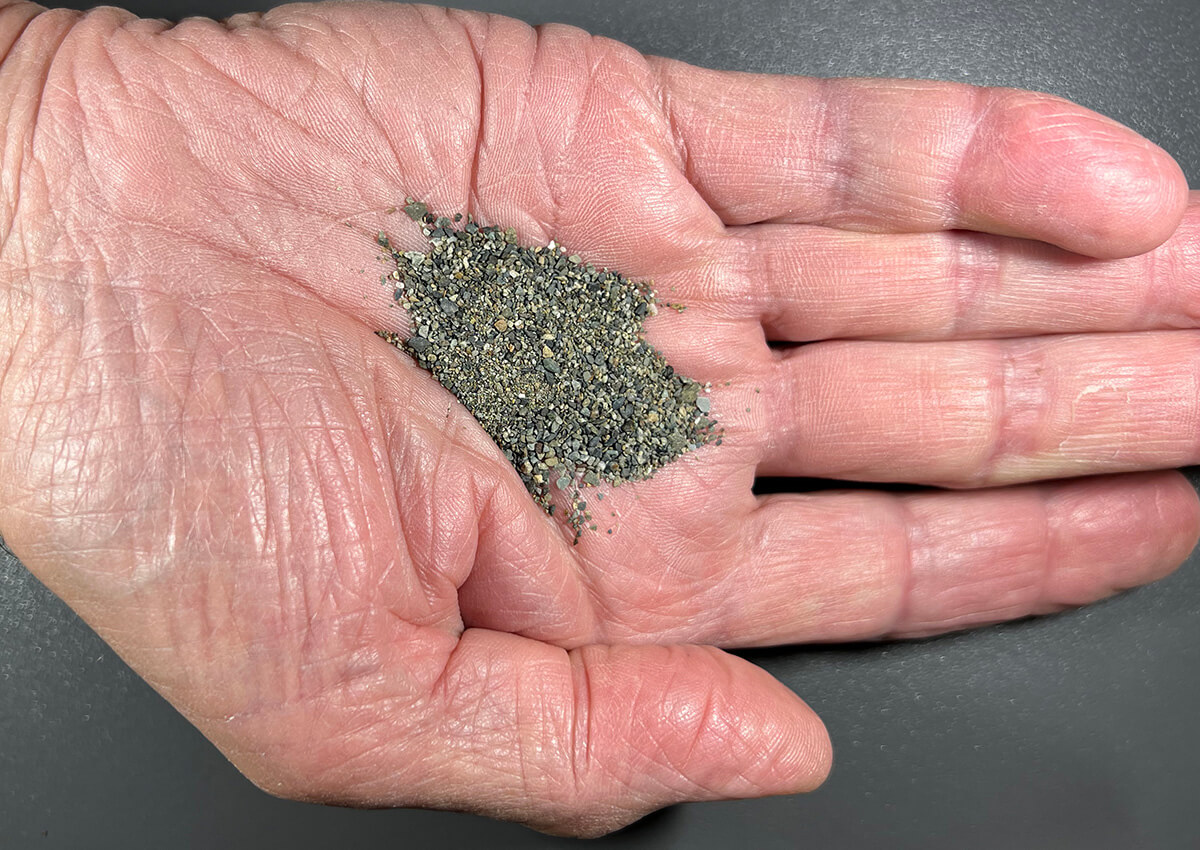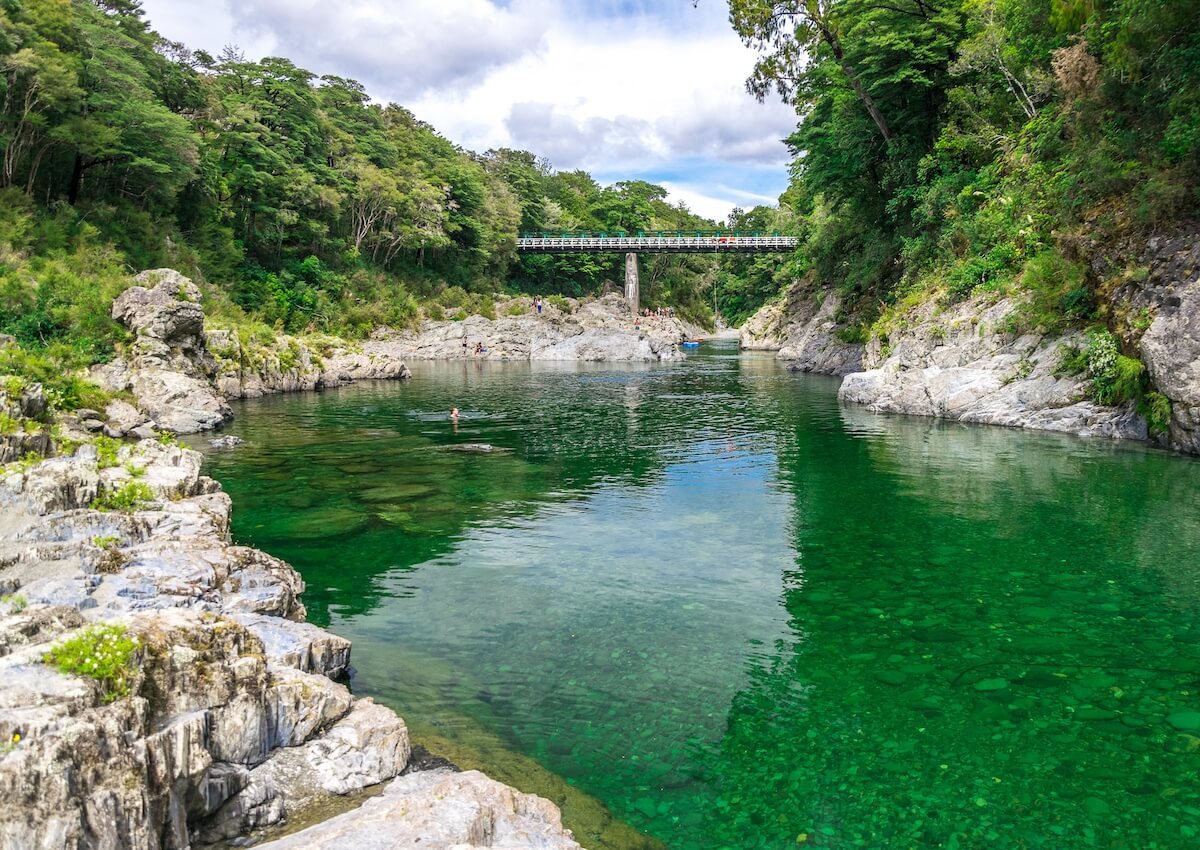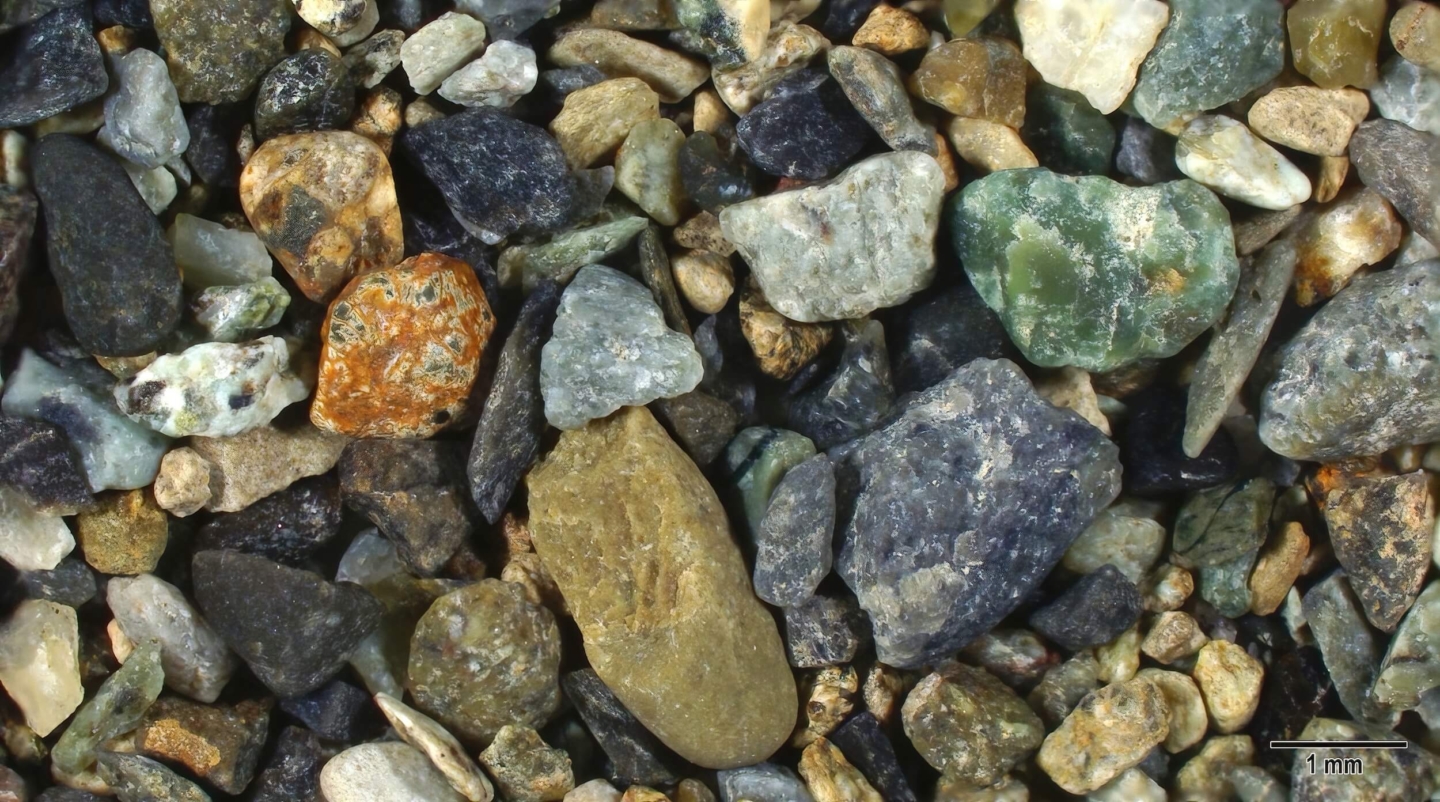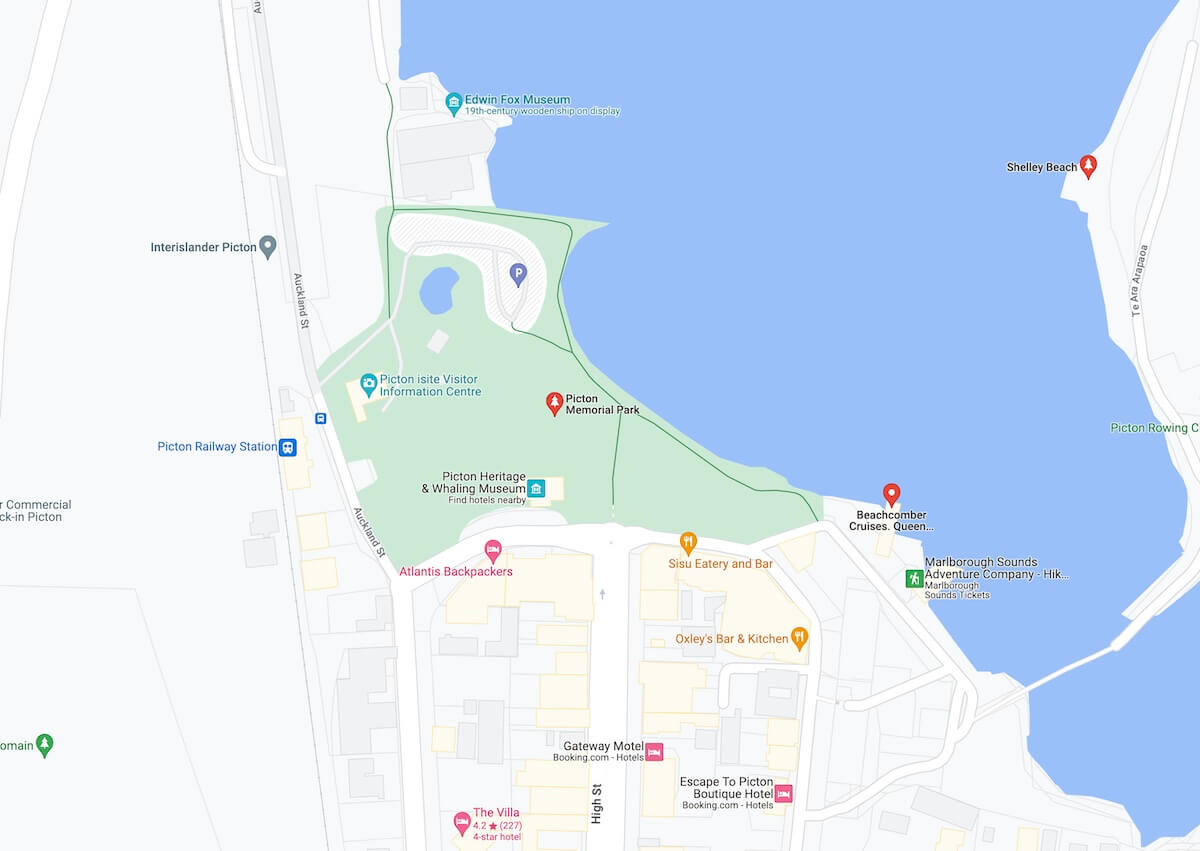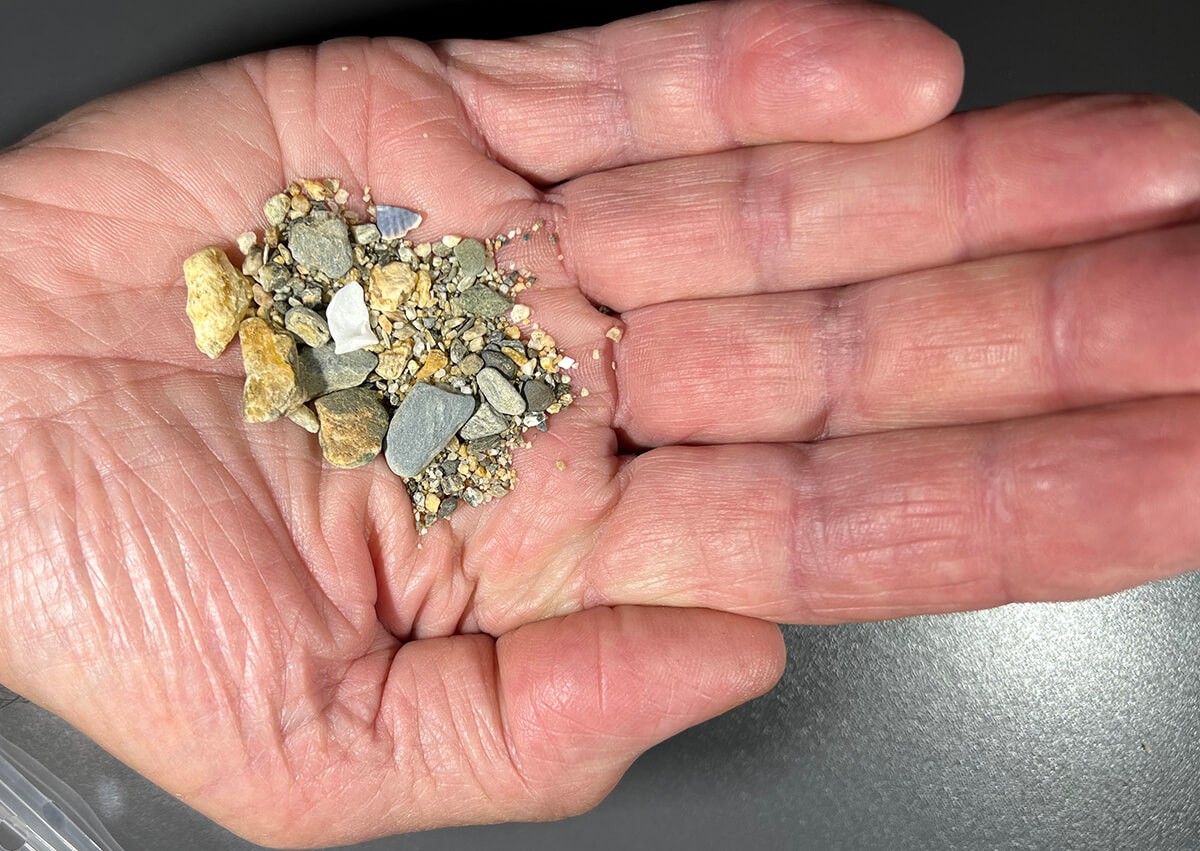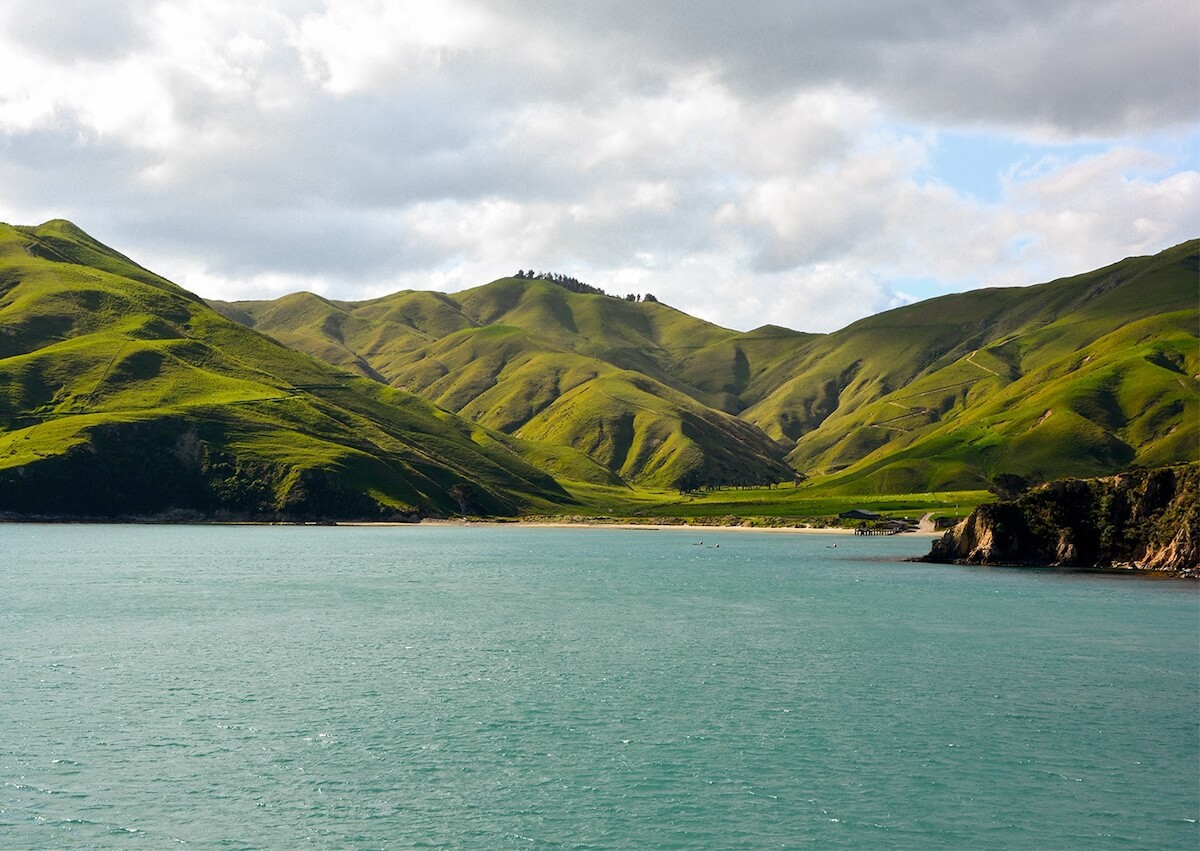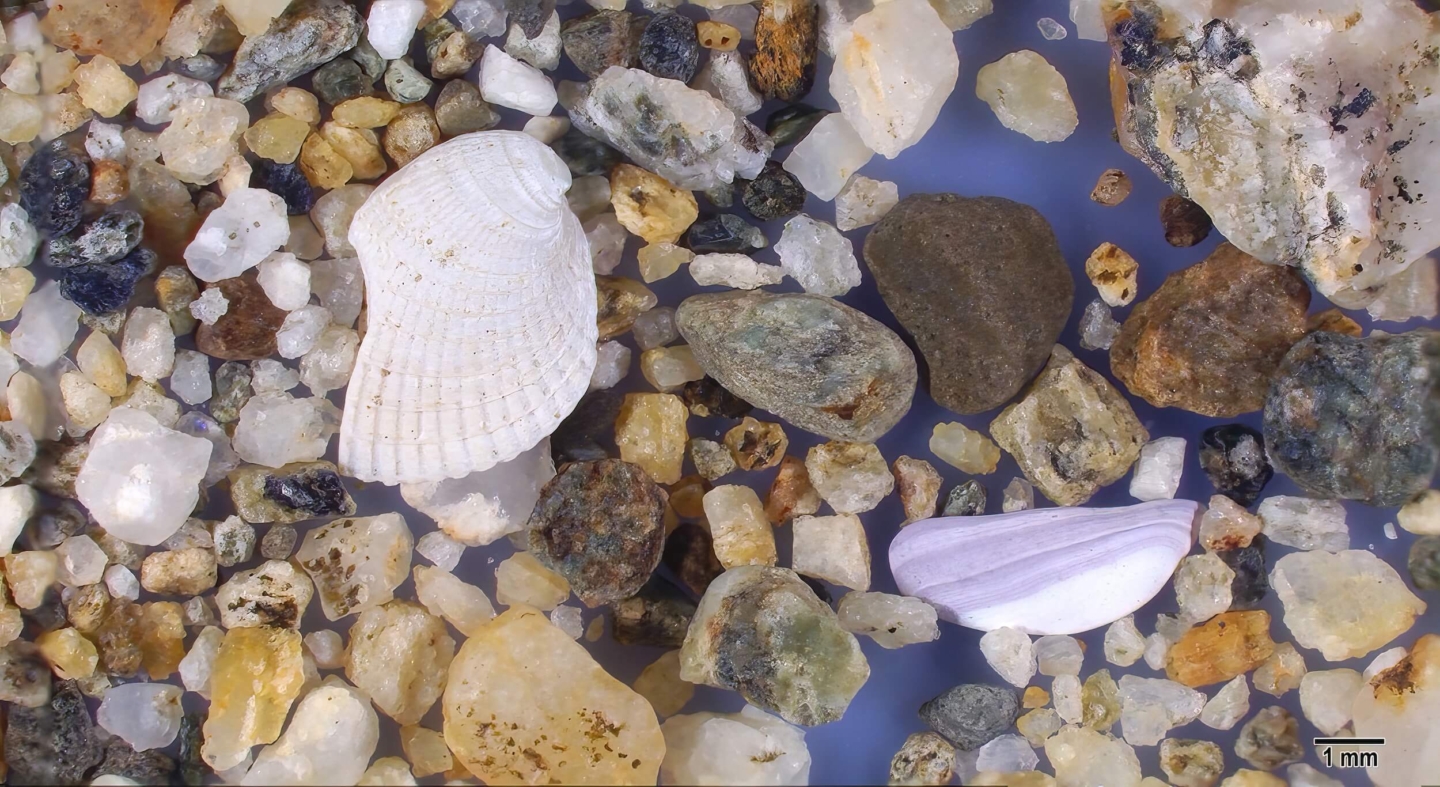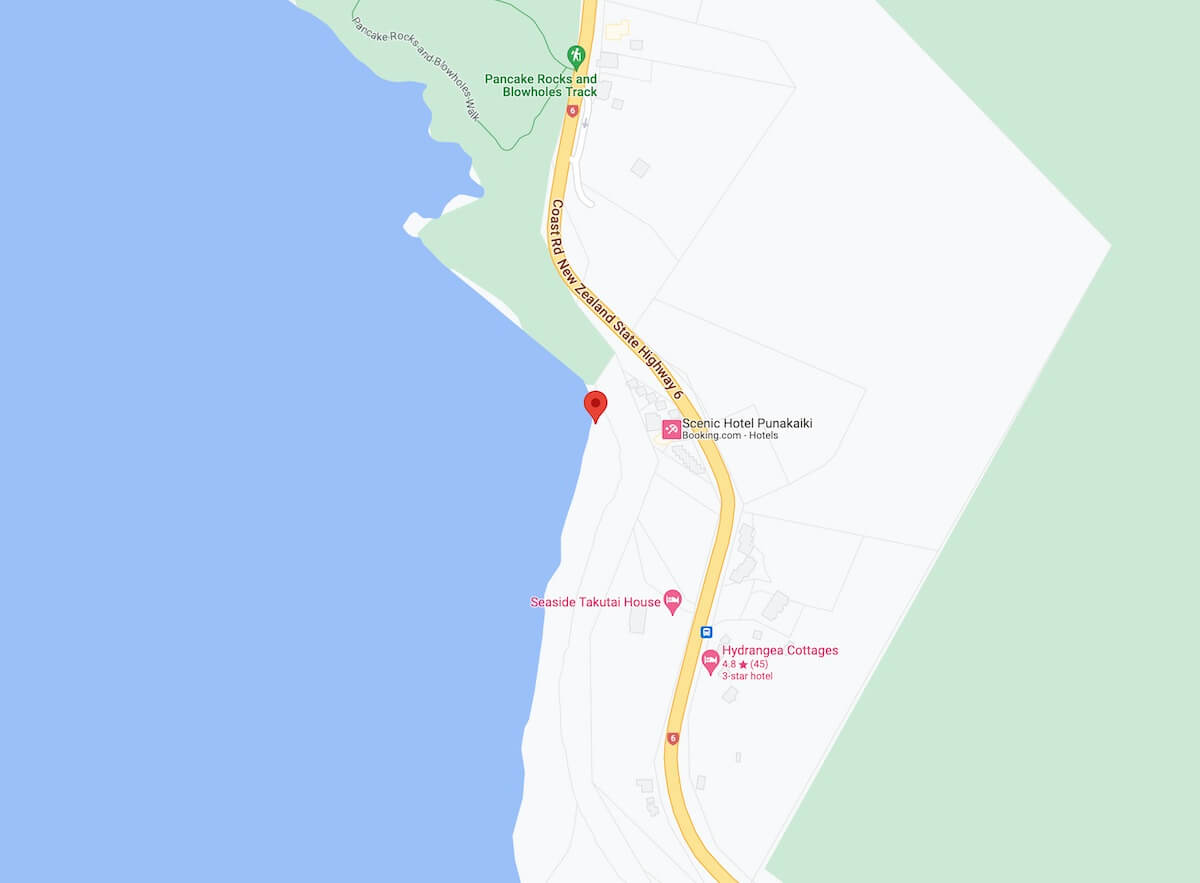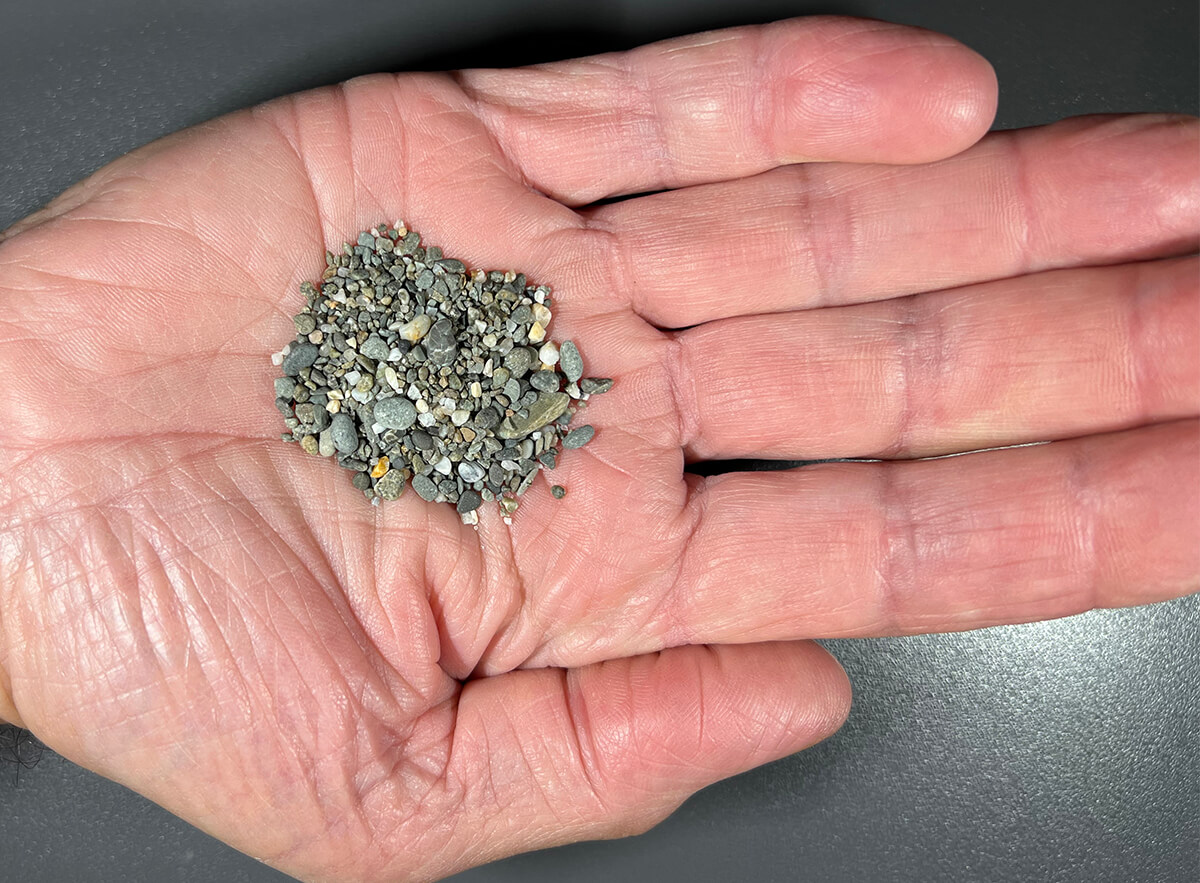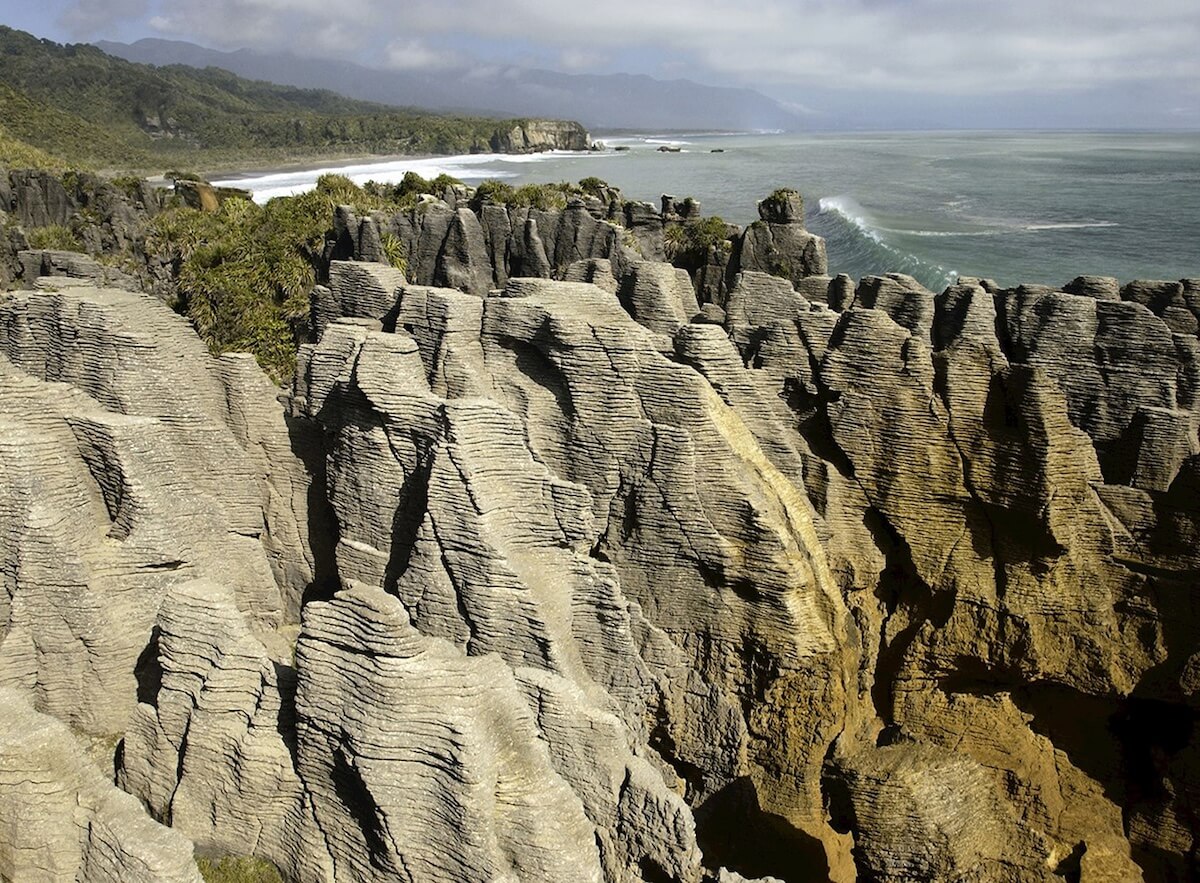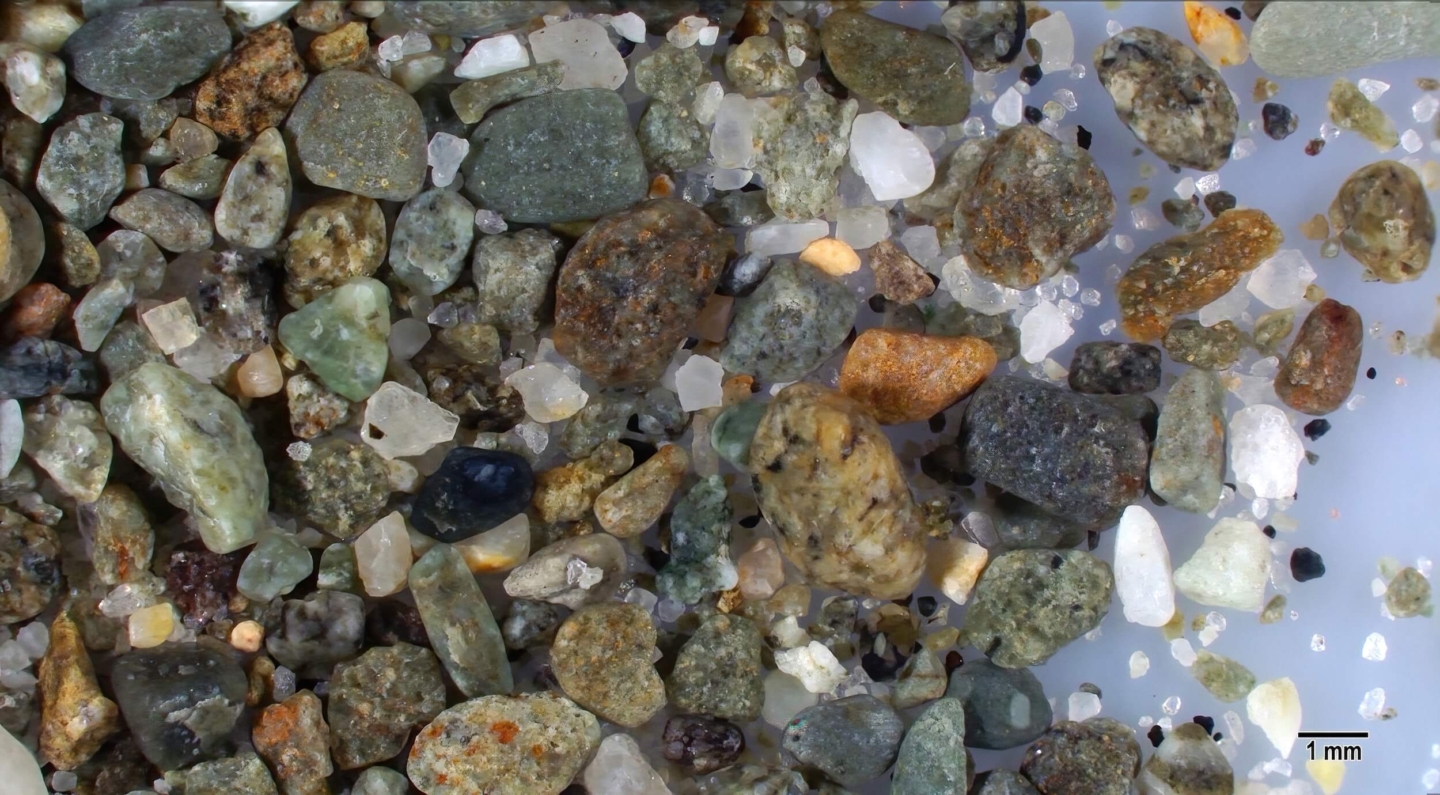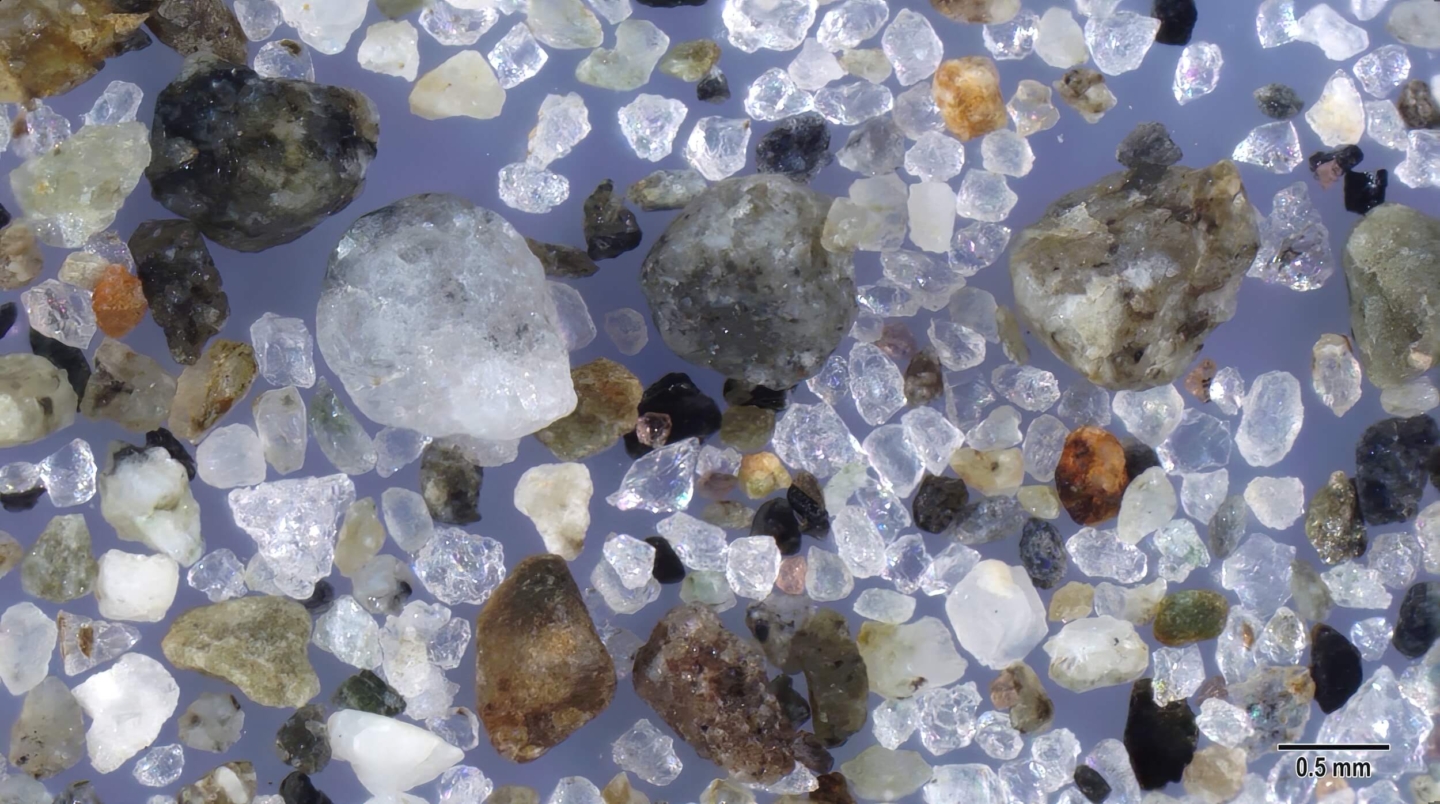New Zealand
New Zealand is part of a continent call Zealandia, most of which lies under the ocean. It straddles the Pacific and Australian tectonic plates with its plate movements causing volcanic activity in the North Island and earthquakes throughout the country. Most of the South Island consists of rock known as greywacke that under heat and pressure was transformed into schist in the west and south. The North Island consists mostly of greywacke that has been covered by layers of volcanic rock. New Zealand has a well-documented ongoing history of geological activity, tsunamis, hydrothermal eruption, and landslides.
Hot Water Beach
Hot water beach gets its name from its underground hot water that with a little digging can become a natural hot tub or spa. Within two hours either side of low tide, it is possible to dig into the sand allowing hot water to escape to the surface forming hot water pools.

Hot Water Beach sand is a mixture of biogenic and geological sand grains with larger pink and tan off white grains of mollusk shells. There is one shell fragment on the left with parallel brown bands, a green sea urchin spine with parallel lines near the bottom center, and a generalized distribution of small sharped edged clear quartz grains along with tan, brown and black fragments of volcanic origin.
Mission Bay Beach
Mission Bay is a picturesque seaside suburb of Auckland city with breathtaking views of Hauraki Gulf.
Rotorua Beach
Rotorua, a popular tourist destination, is a site of geothermal activity featuring mud pools, geysers and hot springs. This area is noted for its Maori culture.
Tairua Beach
Tairua lies on the northern bank of the mouth of the Tairua River and boasts of scenic and stunning views including the peak of the volcanic Mount Paku.
Te Karo Bay
Te Karo Bay is a popular surf and picnic spot in the Tairua area, home of an historic sailors grave memorial, and one of the best surf spots in this area.
Wellington Beach
Wellington beaches have dark pebbly black sand that is typically high in iron content.
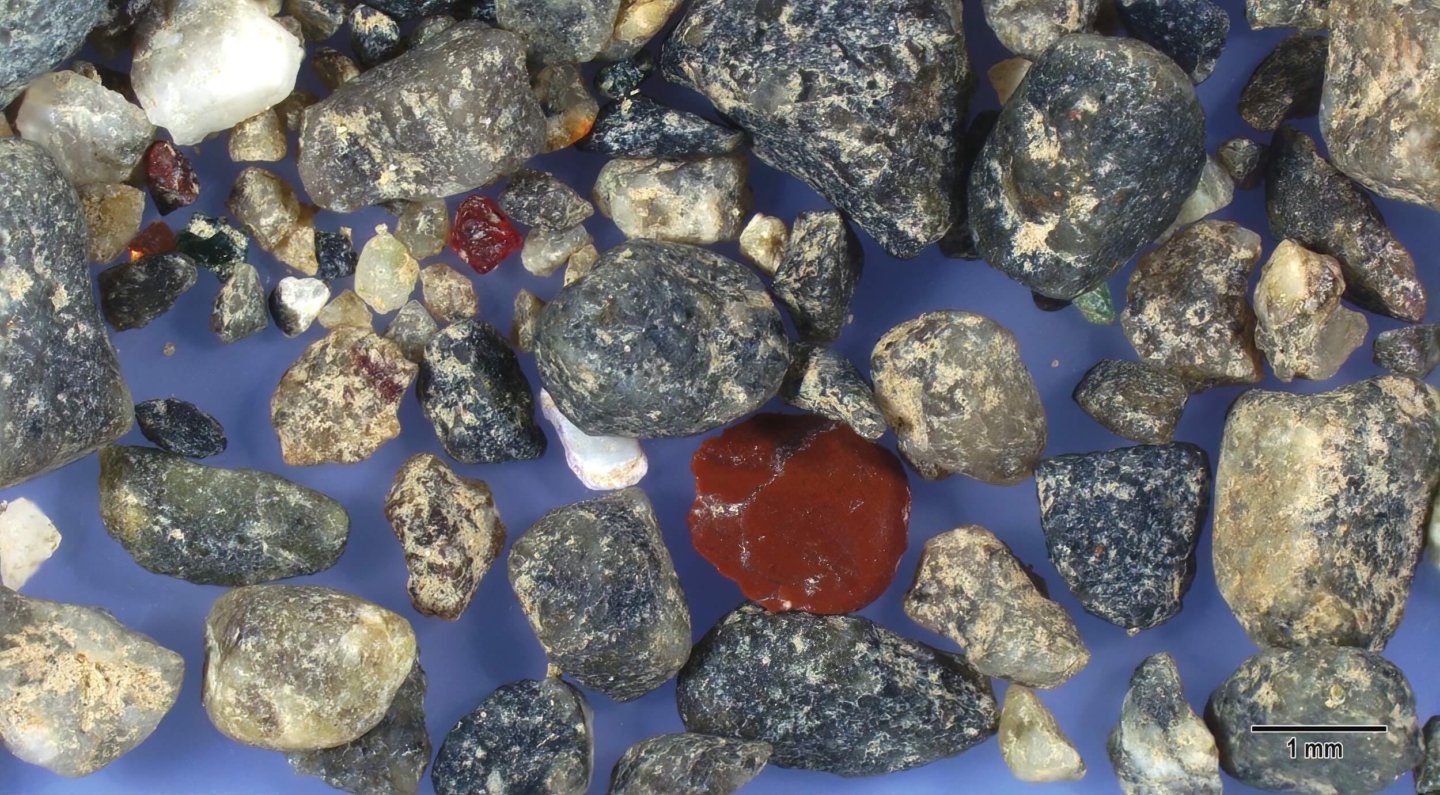
Large sand grains with variegated light and dark textures are metamorphic rock fragments with contours worn smooth by wave action. The glistening red grains are jasper. One small white sand grain near the center is a mollusk shell fragment that is partly covered by a large, mottled tan, gray and black metamorphic sand grain.
Whitianga Beach
Whitianga is located on the eastern side of the north island on the coast of Mercury Bay and is popular for fishing, diving, water sports, and coastal activities.
Abel Tasman National Park
Named for a Dutch seafarer and explorer, Abel Tasman is a popular national park known for stunning coastal scenery, clear waters, golden sand beaches, and abundant bird and sea life.
Bruce Bay Beach
Bruce Bay provides stunning seas vistas and windswept beaches and looks directly at the Tasman Sea and where Maui first landed in New Zealand from Hawaii. It is a nesting site of Antarctic penguins.
Kaikoura Beach
Kaikoura is a coastal town rich in marine ecosystems, wildlife and natural beauty. It is one of the world’s best places for whale watching and dolphin encounters.
Pelorus River
The Pelorus River boasts of crystal clear water with deep pools for swimming, with waterfalls and stunning natural scenery plus scenic reserve walking tracks.
Picton Beach
Picton is in an area of marine and bird life including five species of dolphin, fur seals, and Little Blue Penguins. This is also an area to observe New Zealand’s endangered Saddle Back Bird.
Punakaiki Beach
Punakaiki is noted for its Pancake Rock, a unique geological formation of compressed layers of heavily eroded limestone resembling stacks of pancakes. The compressed layers of limestone contain calcified marine shellfish and corals. This unique natural site also boasts of “blow-holes” at high tide.

